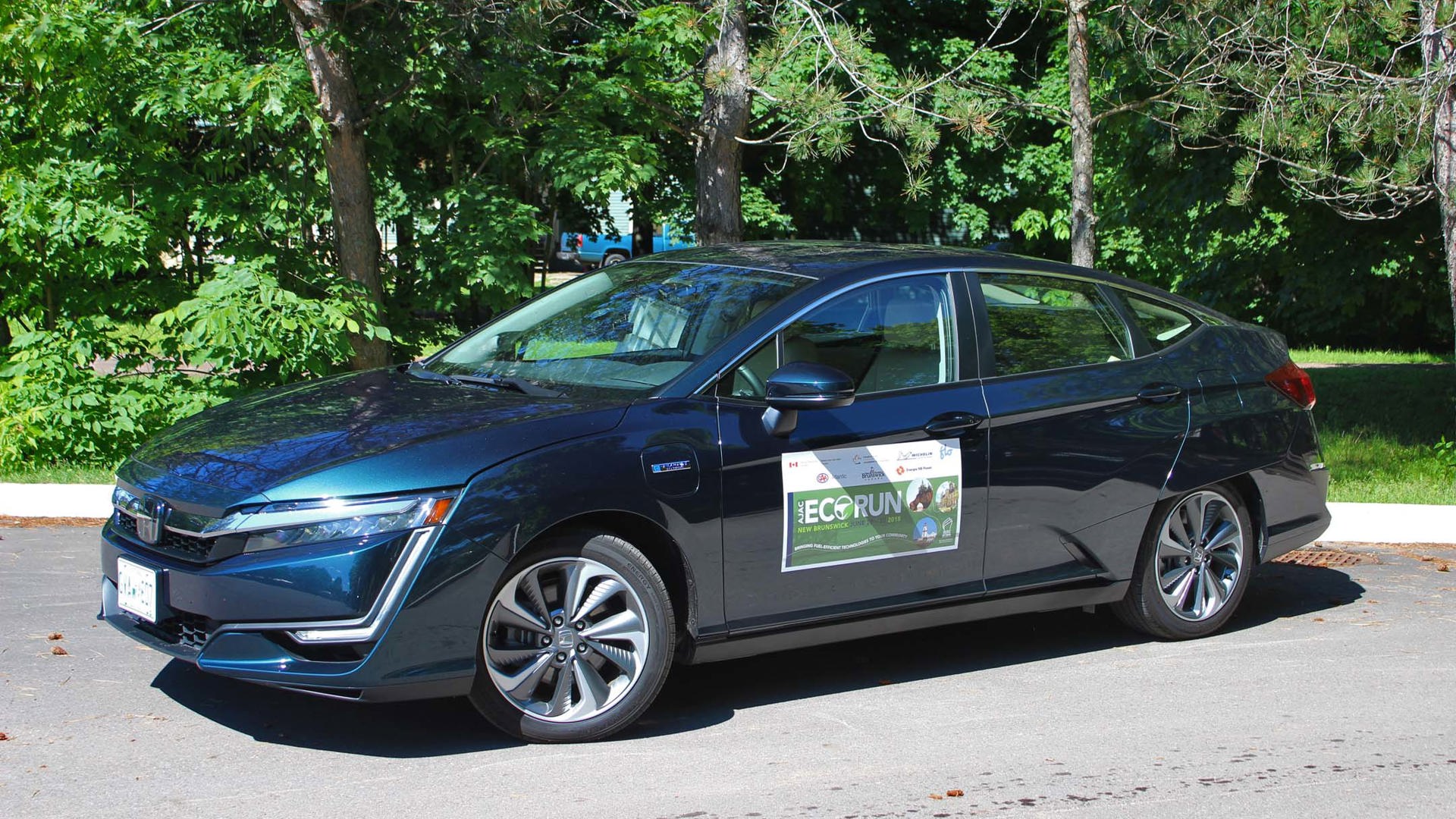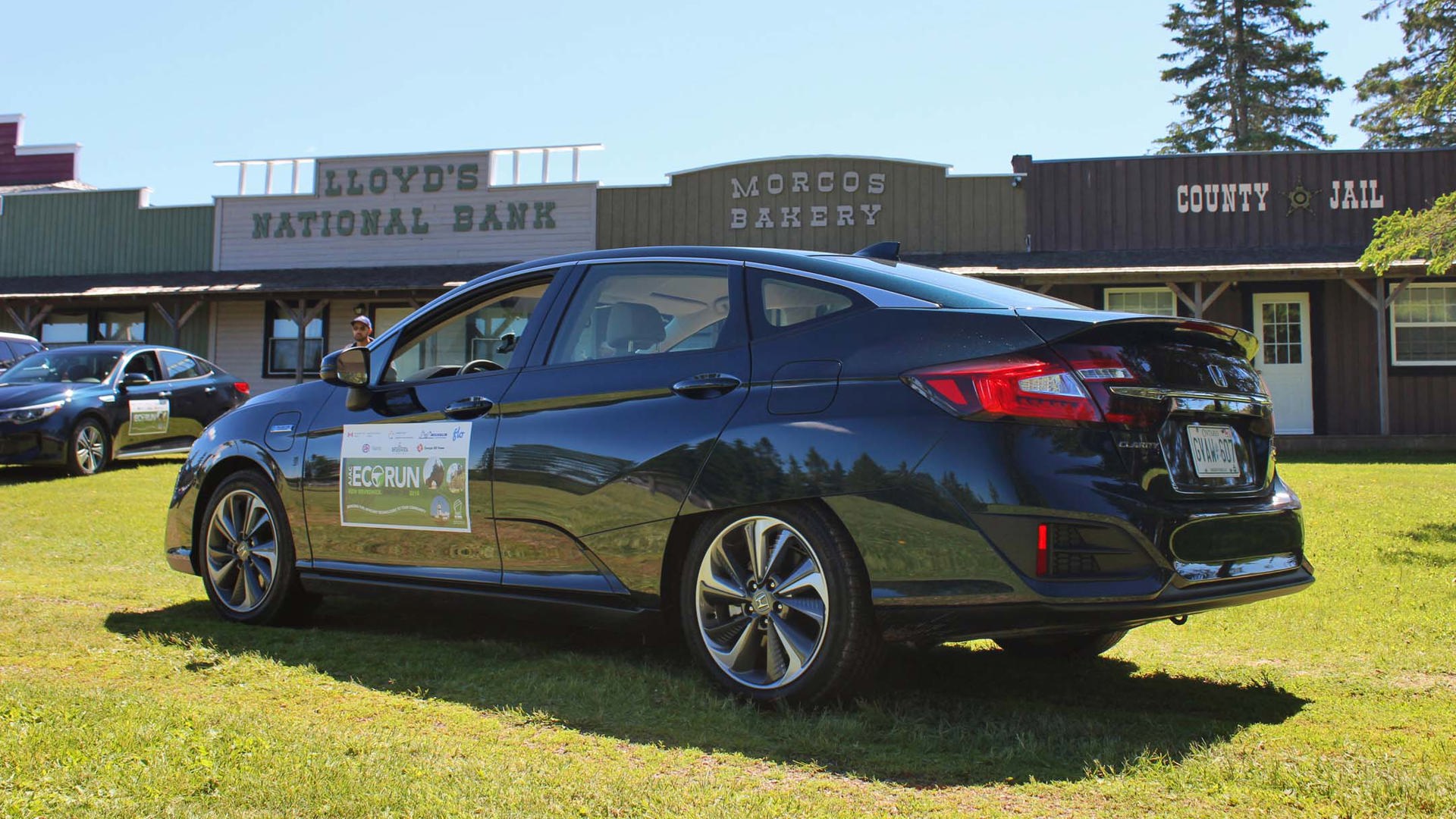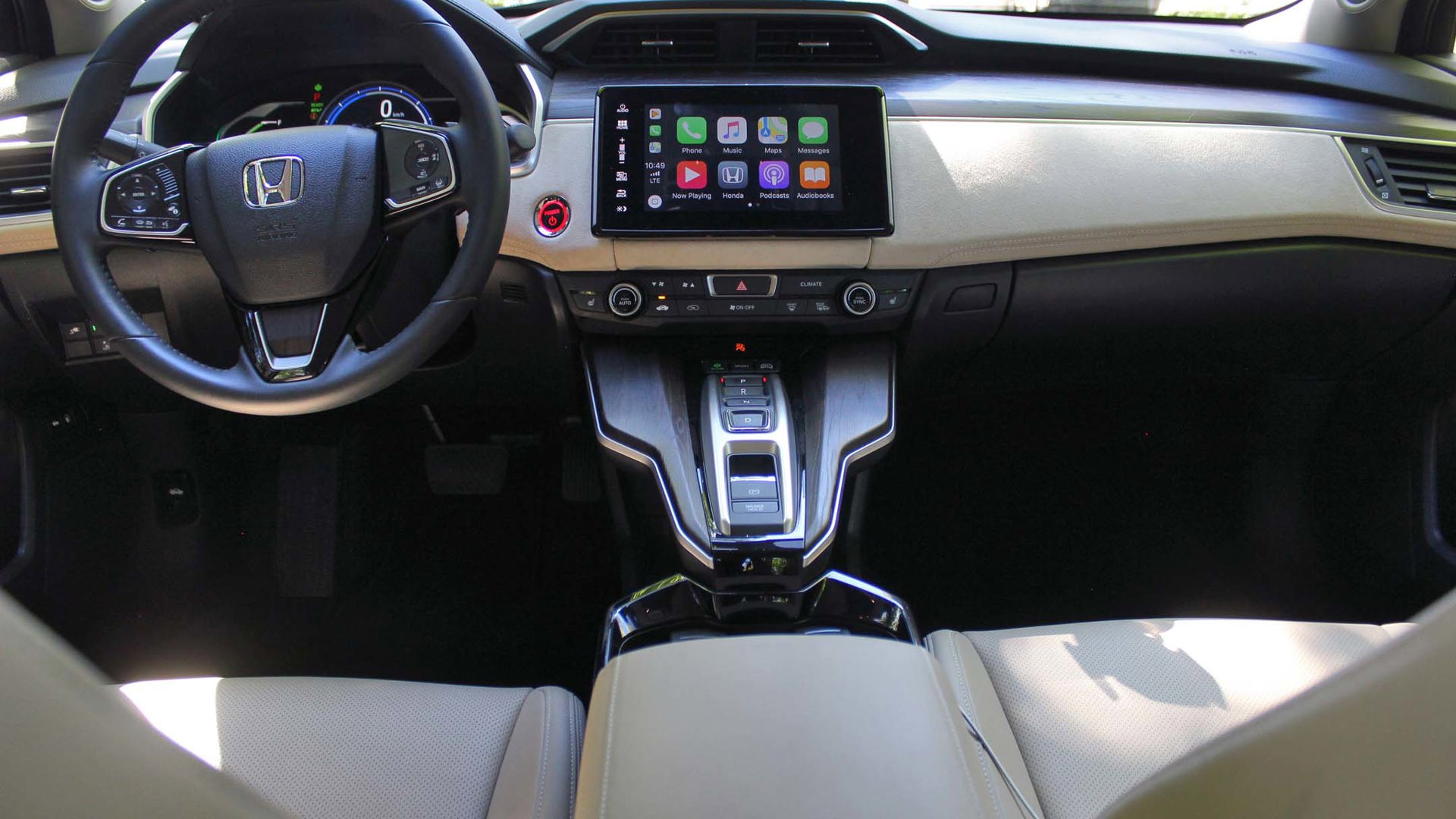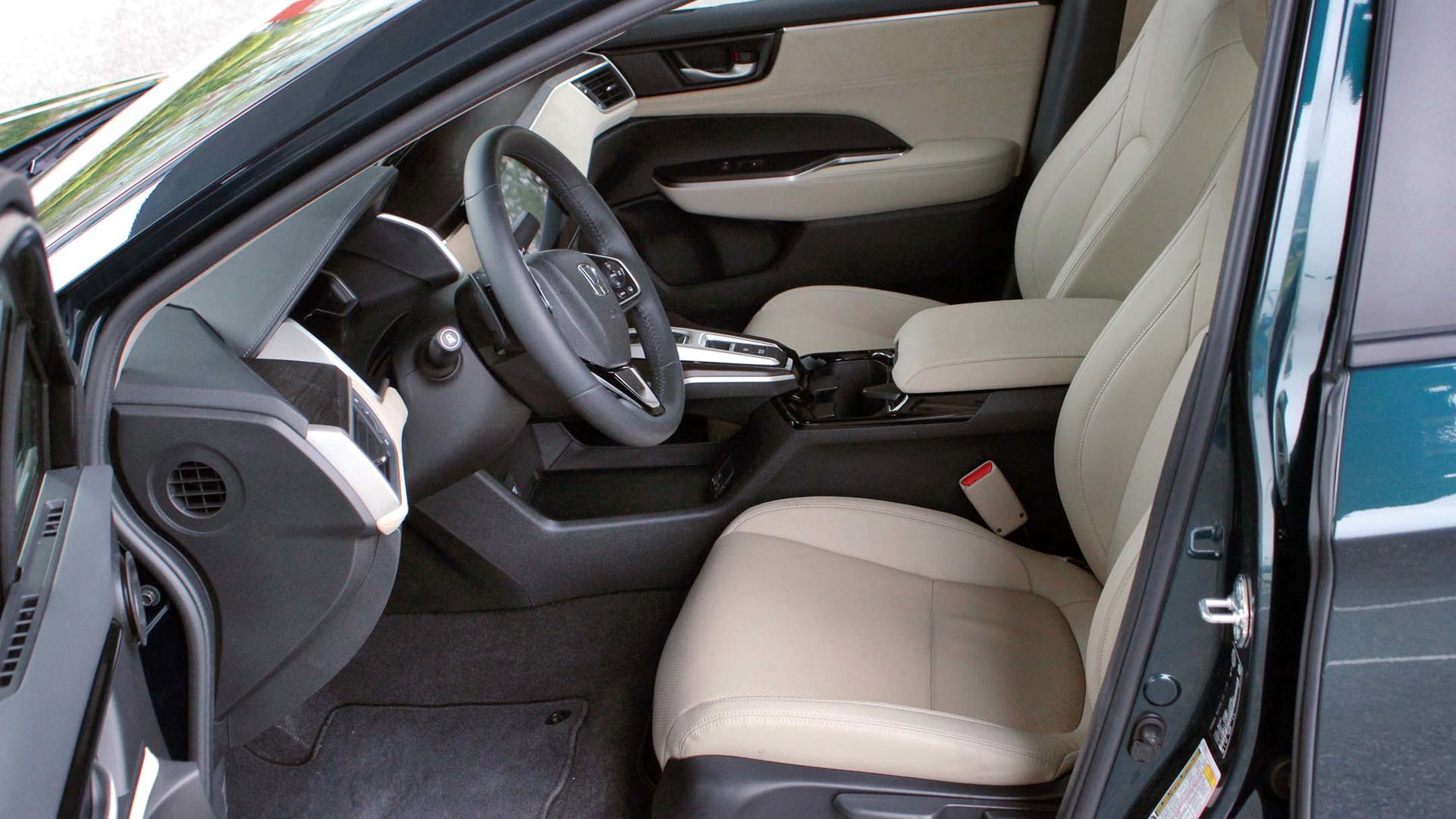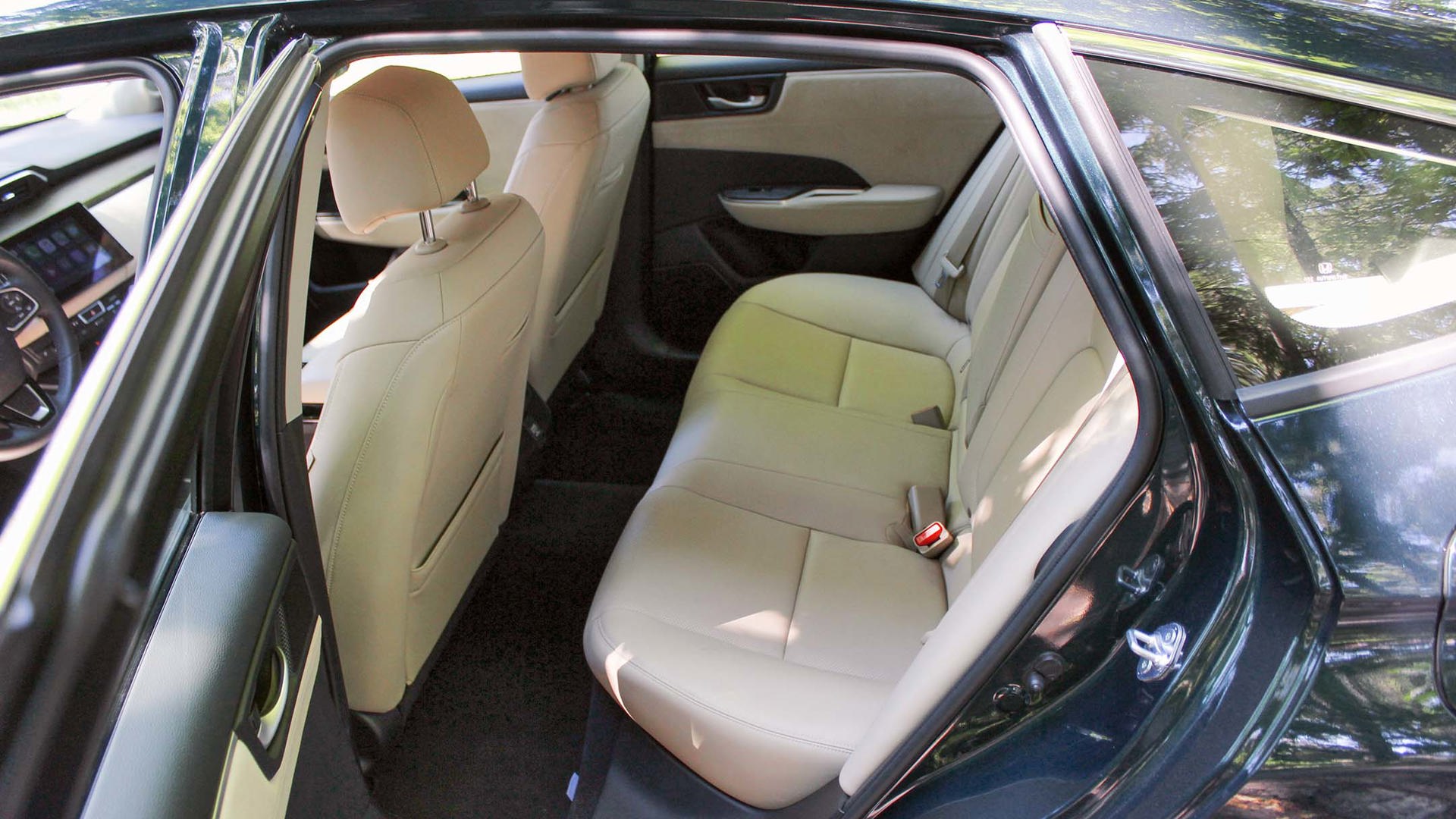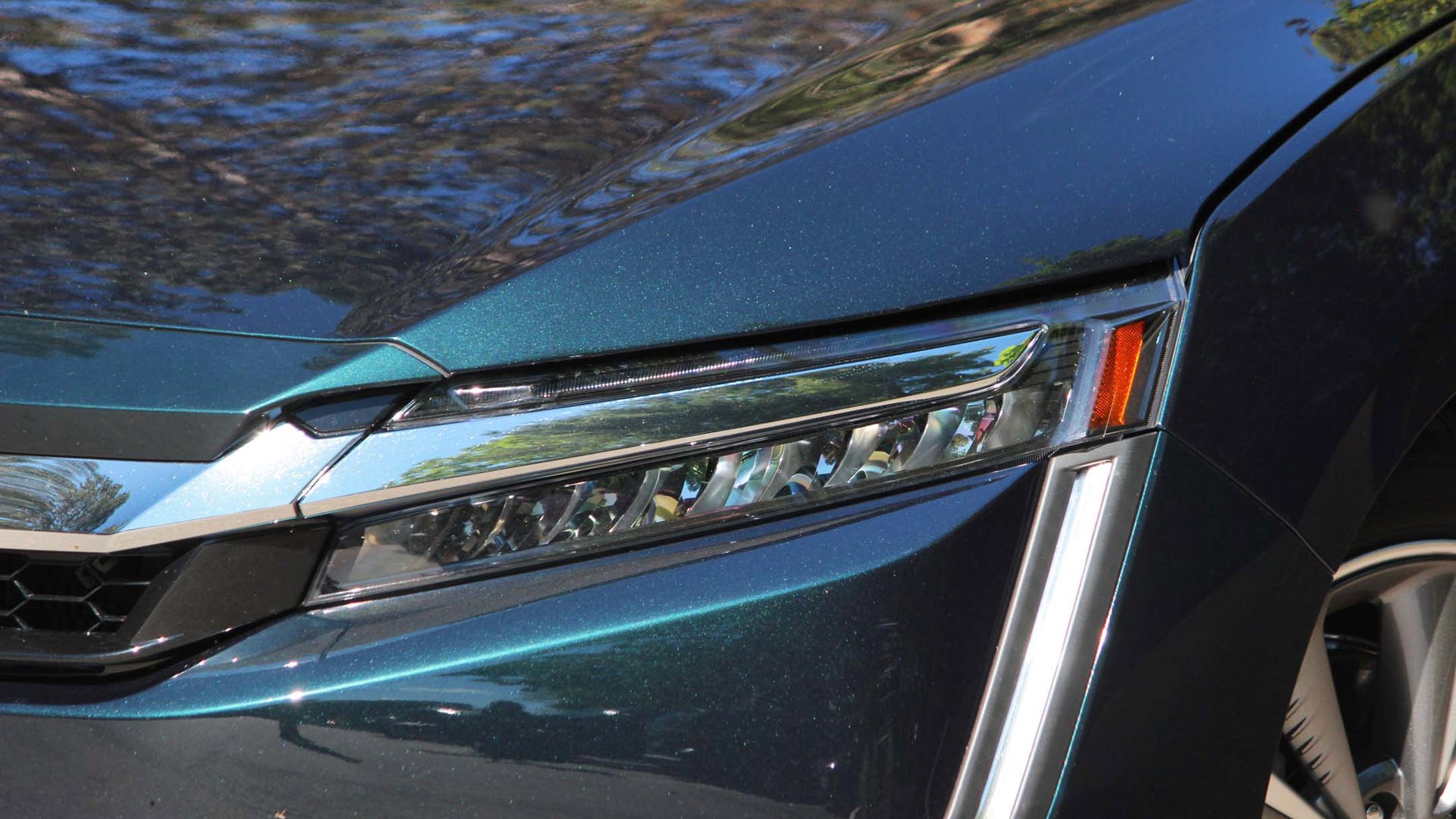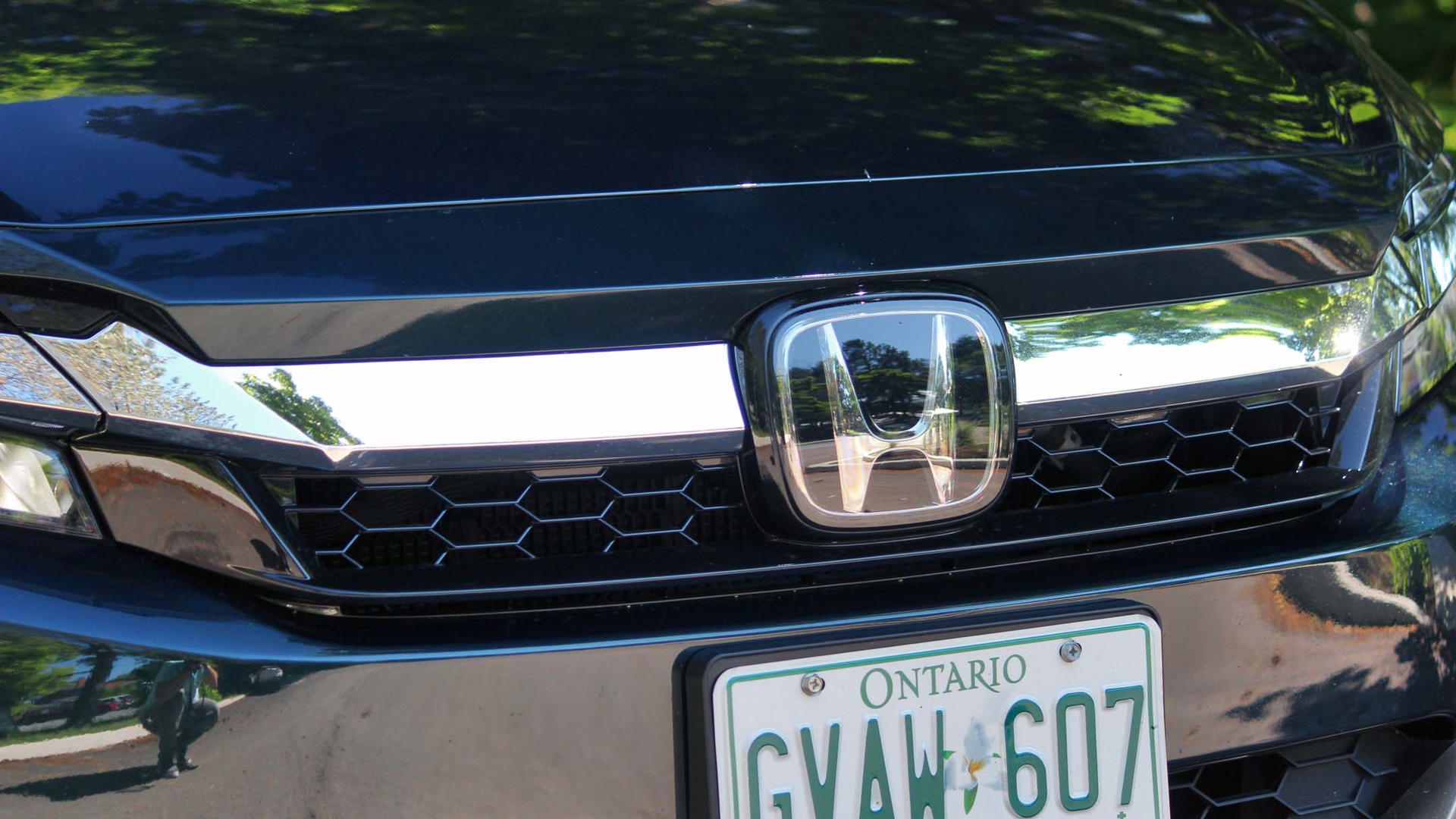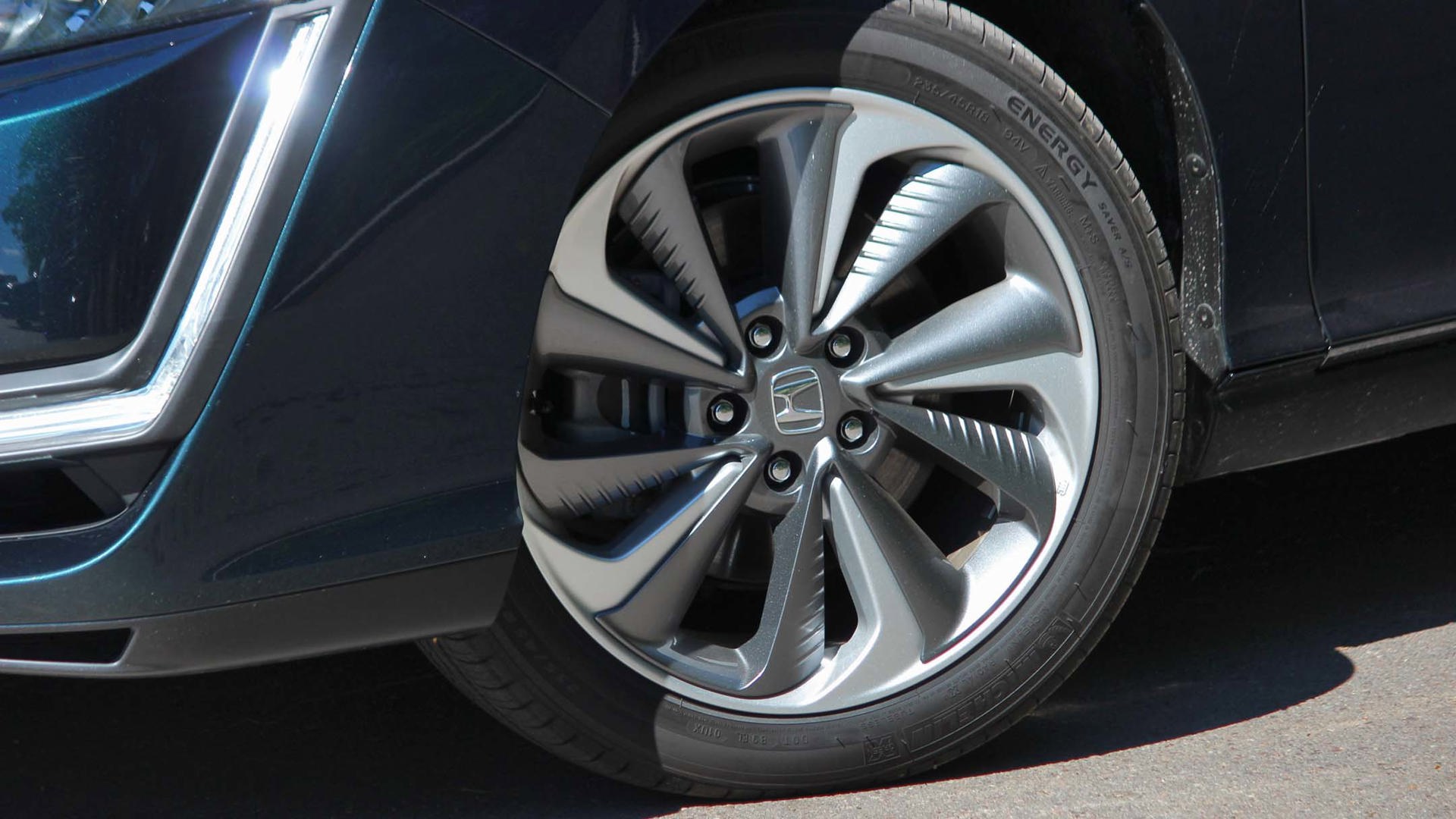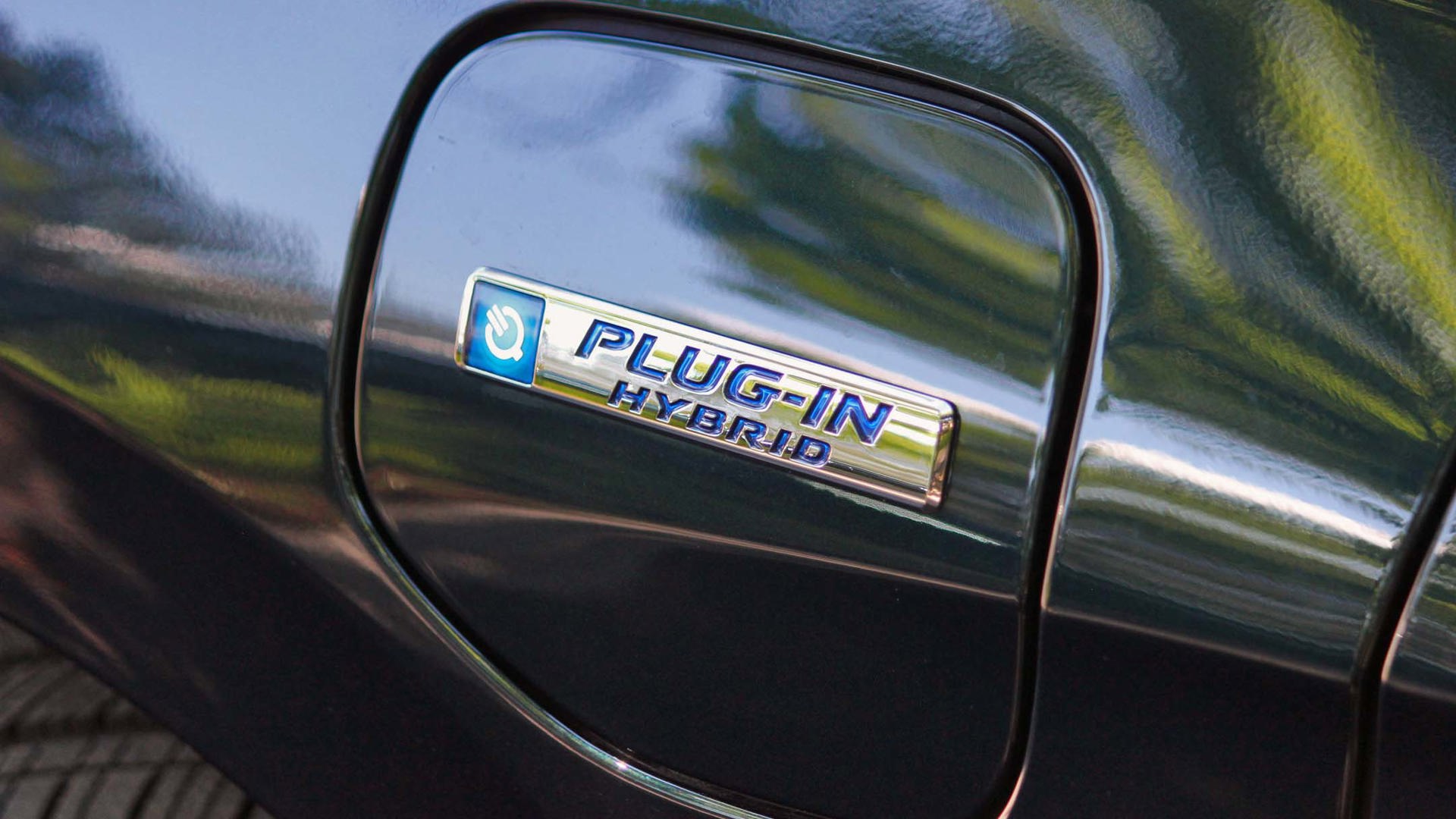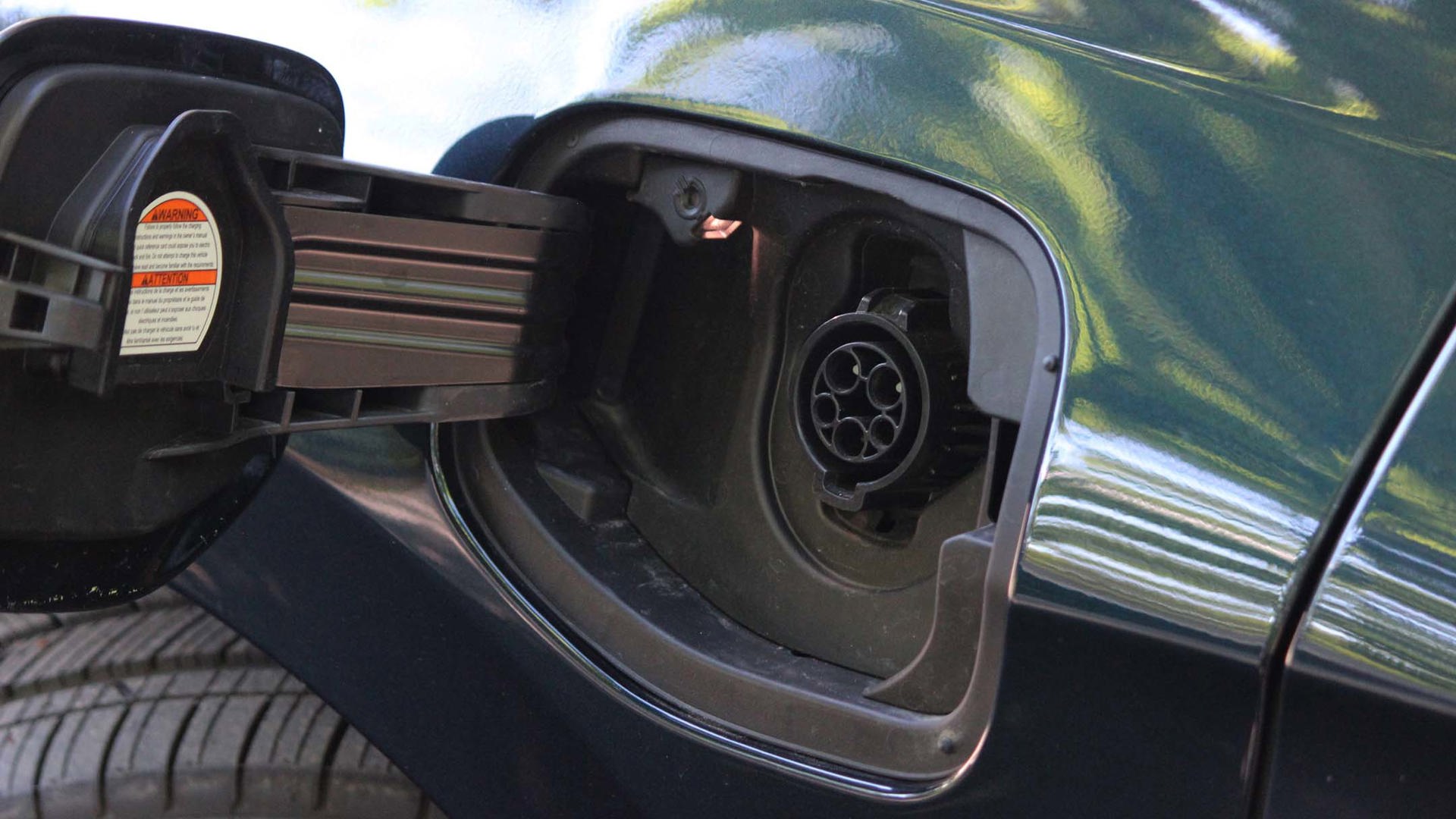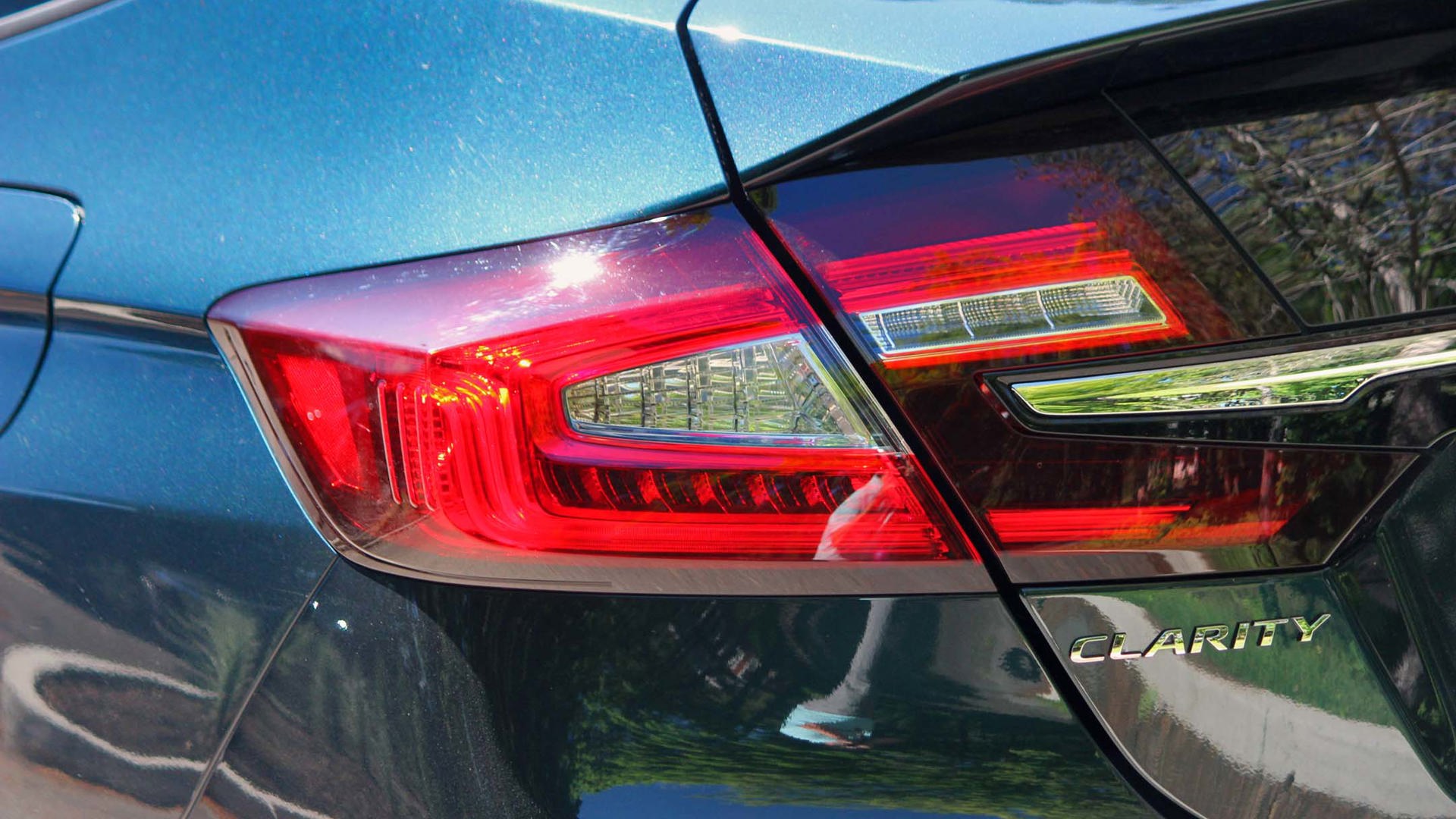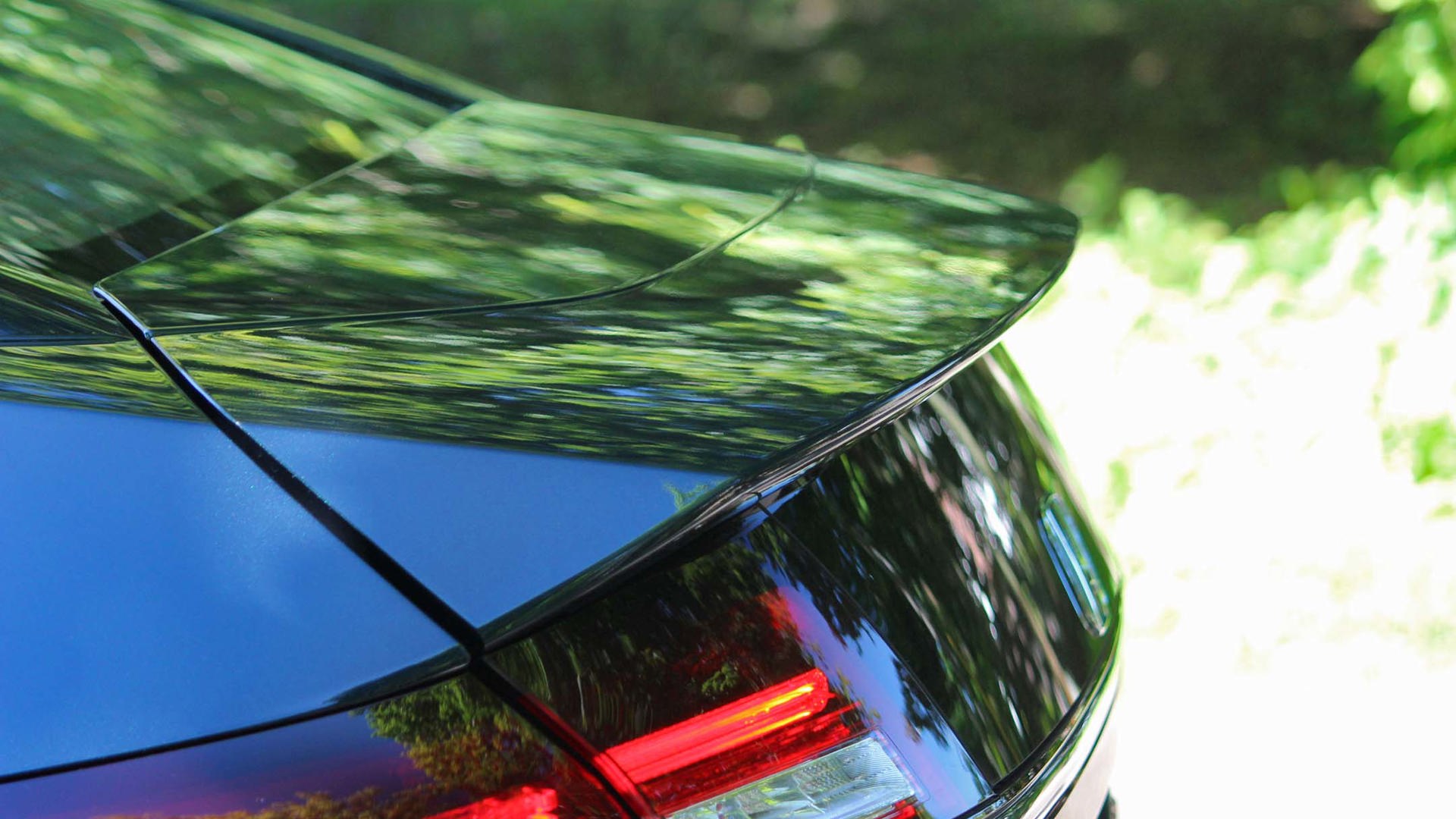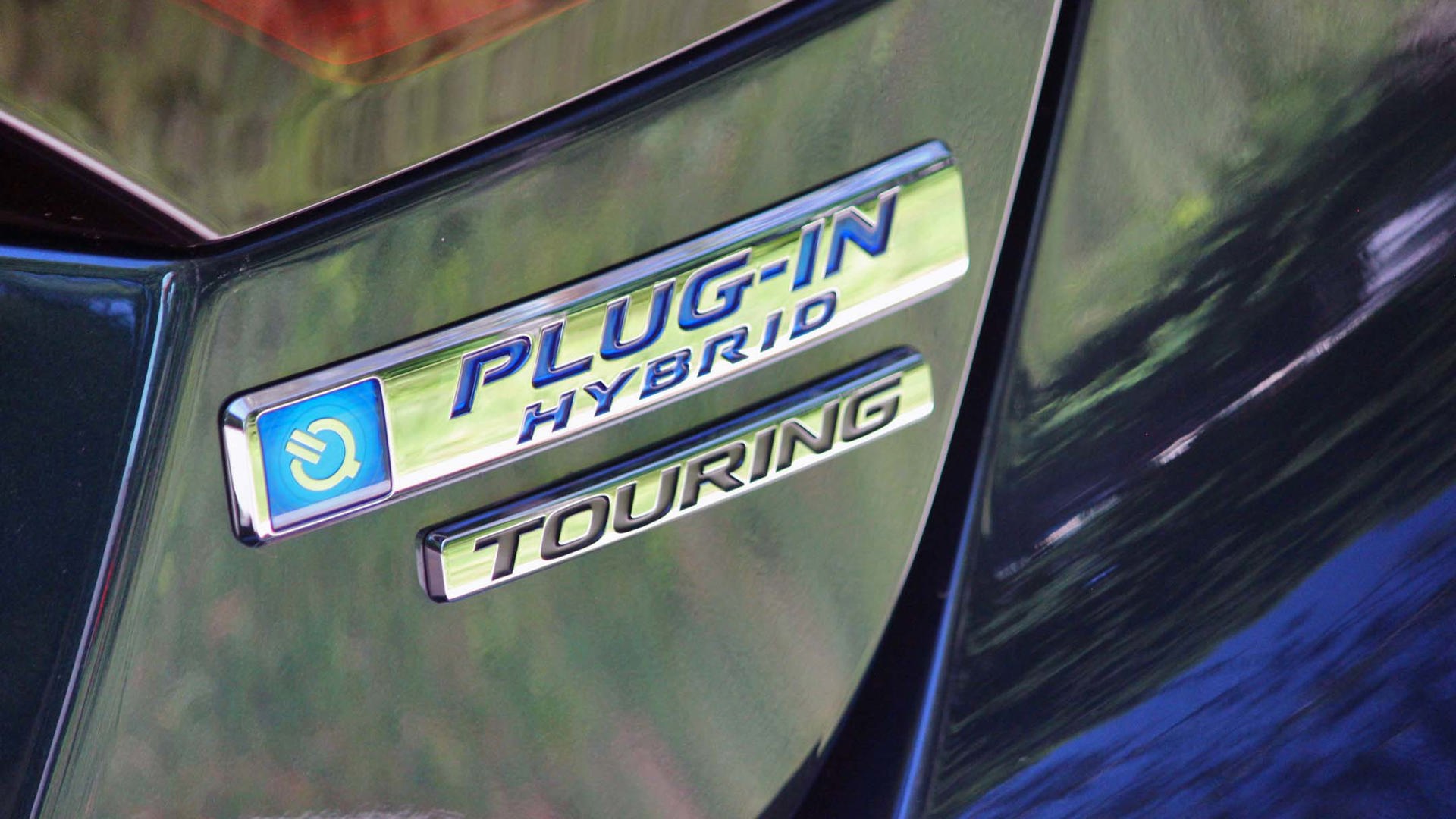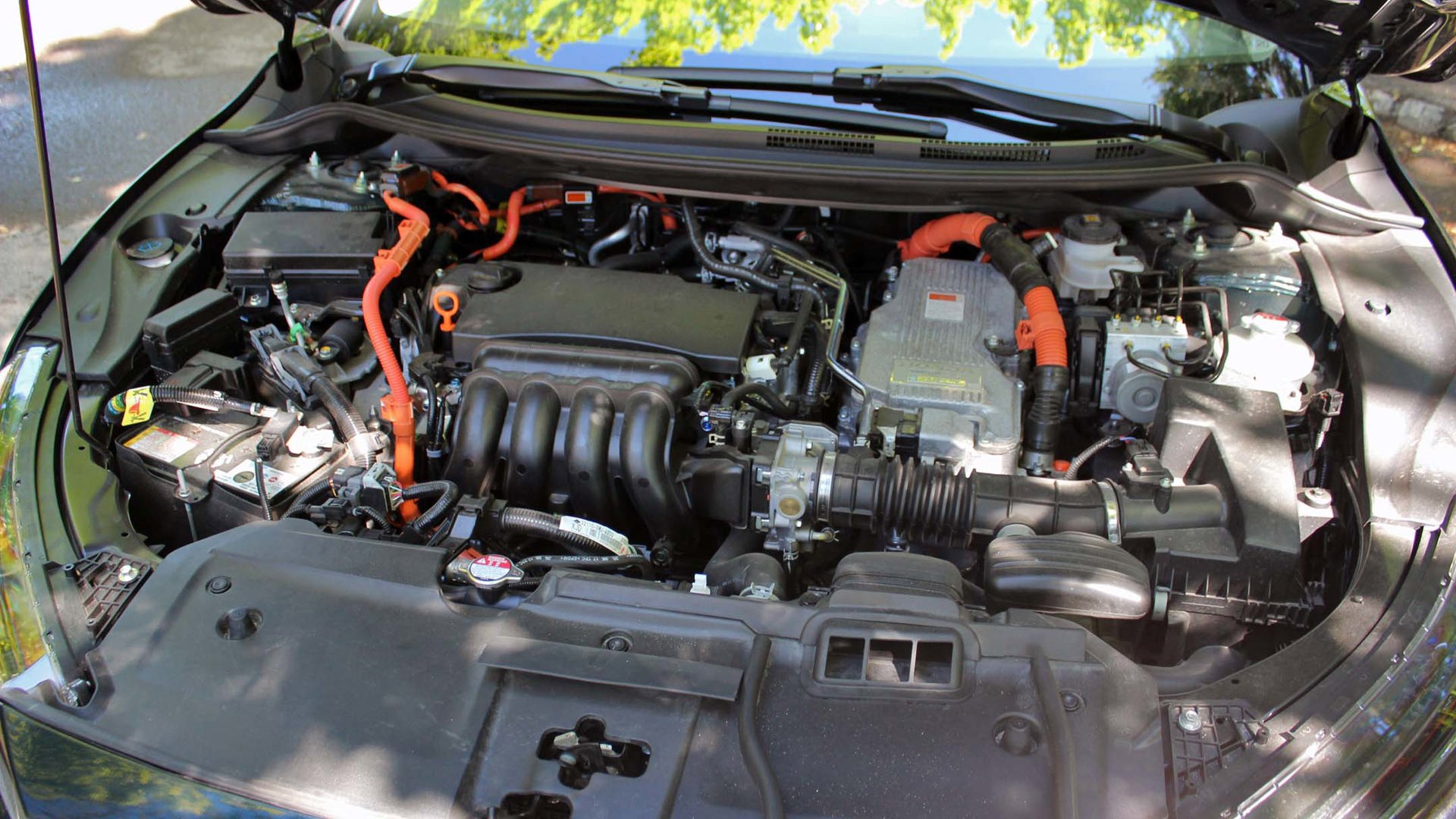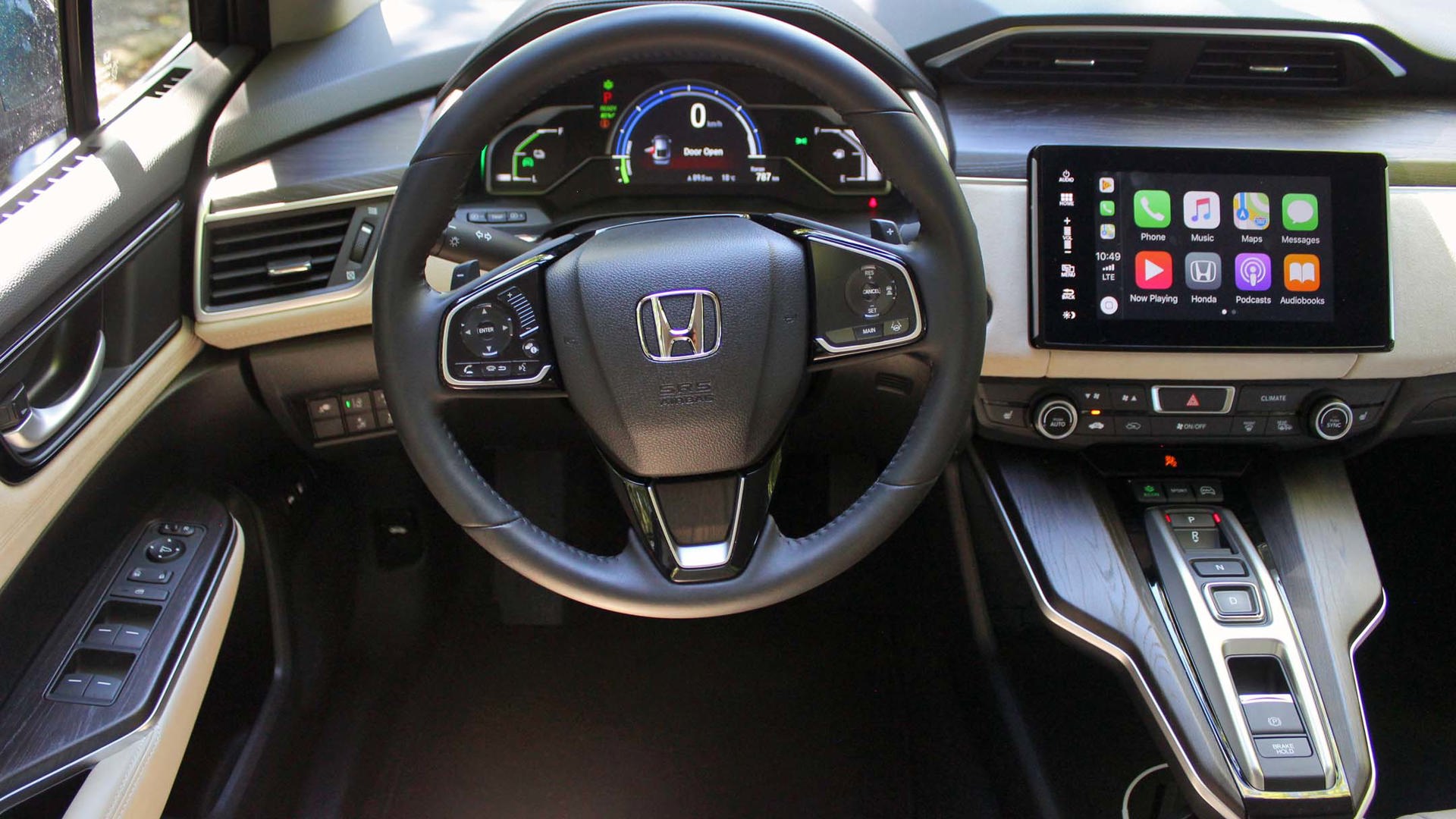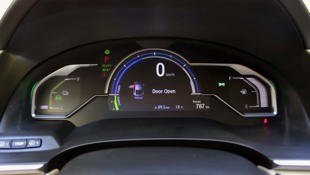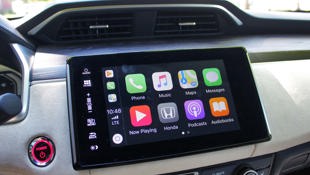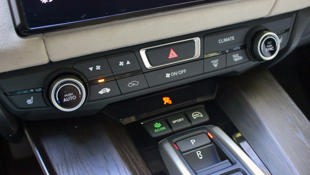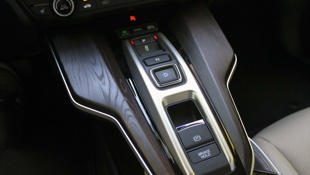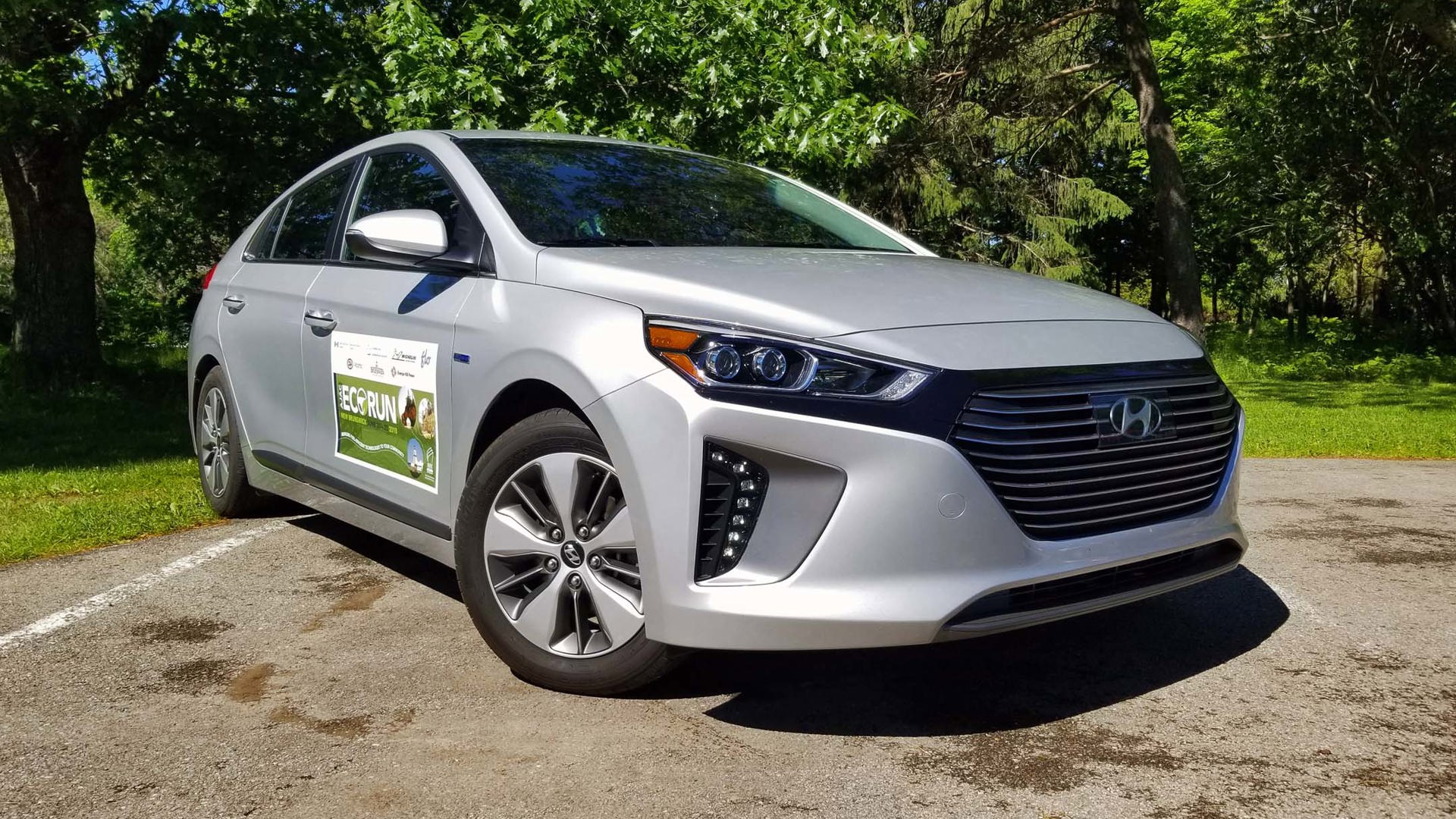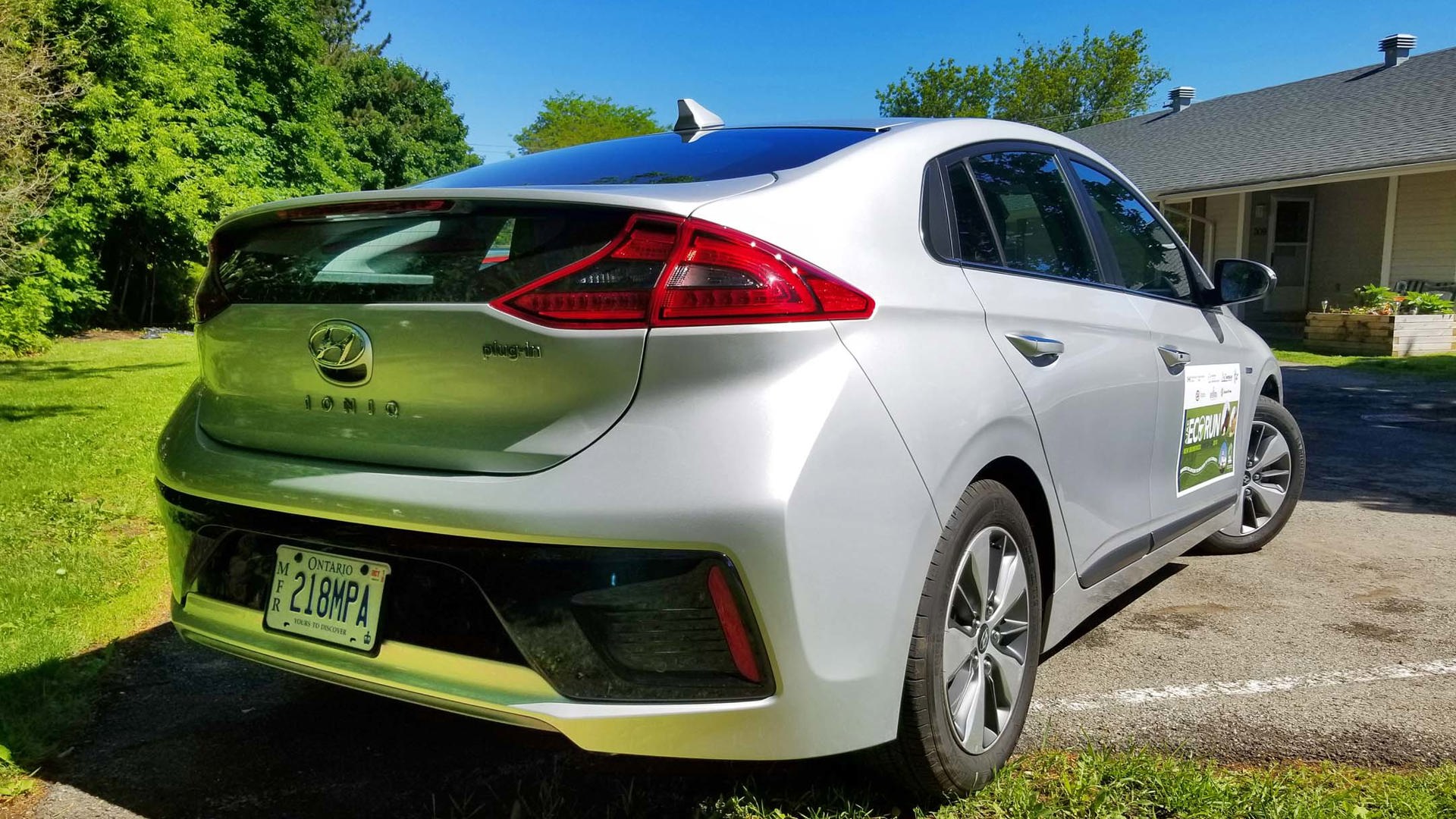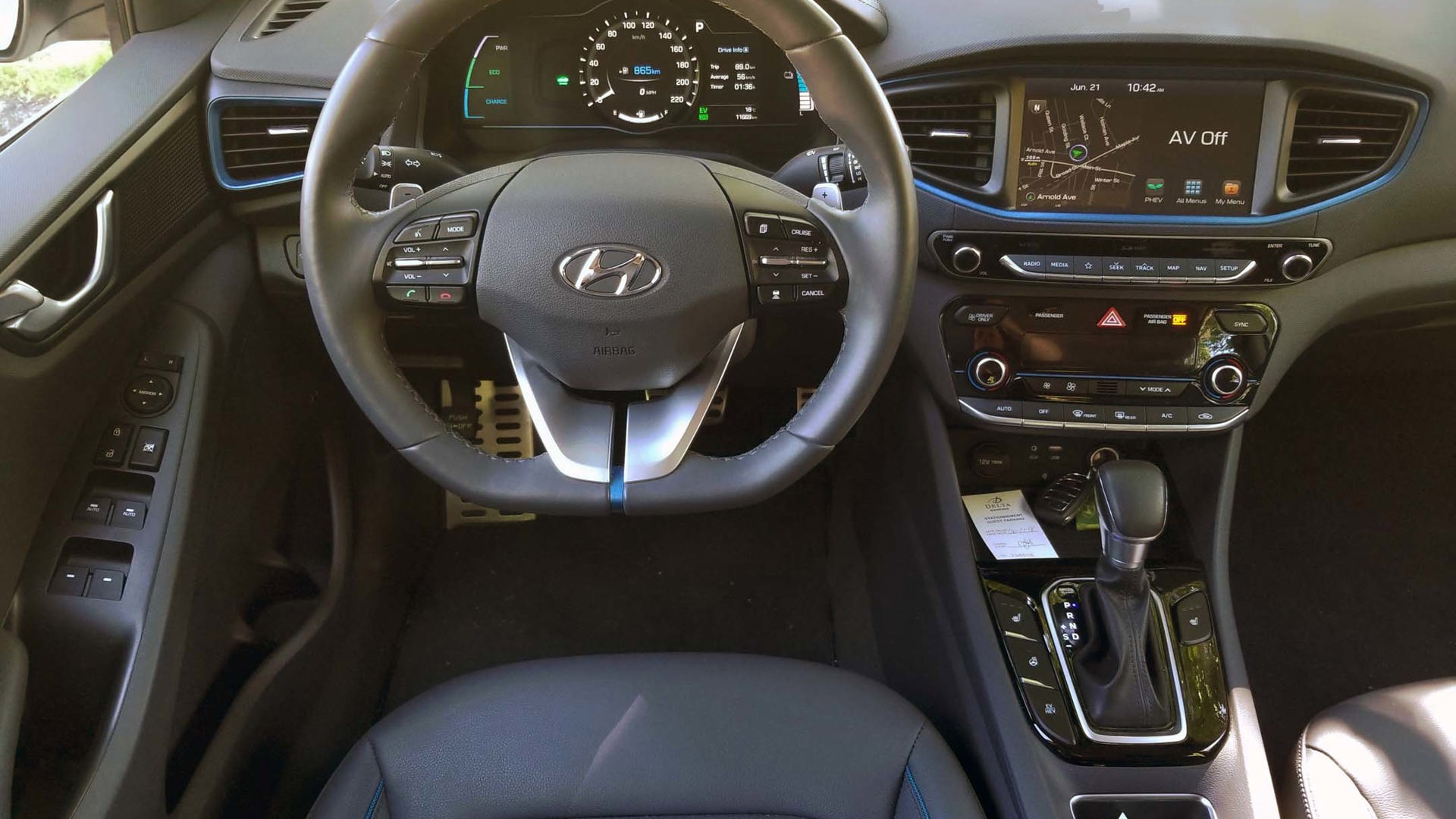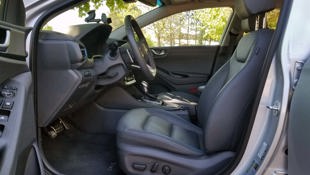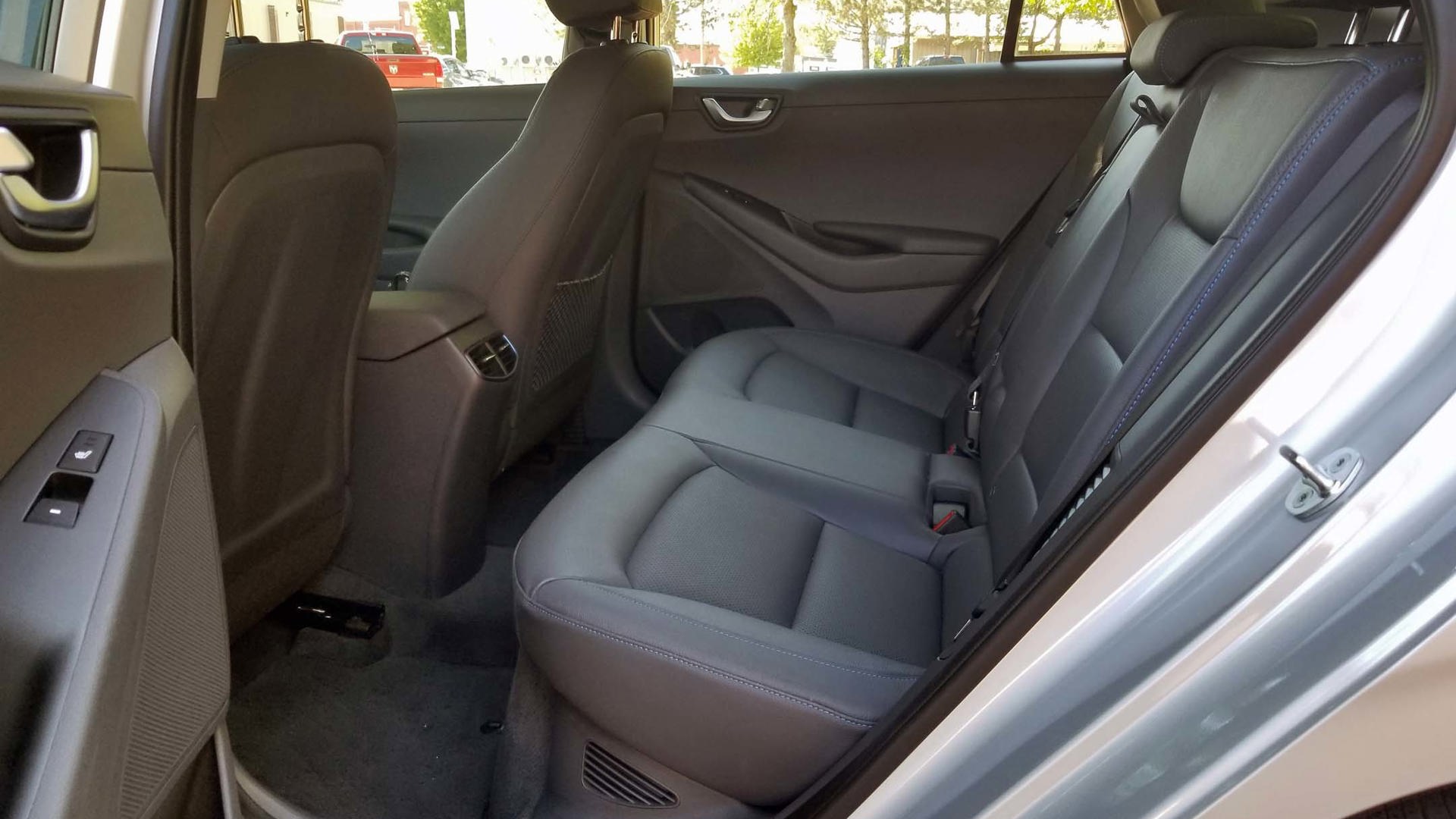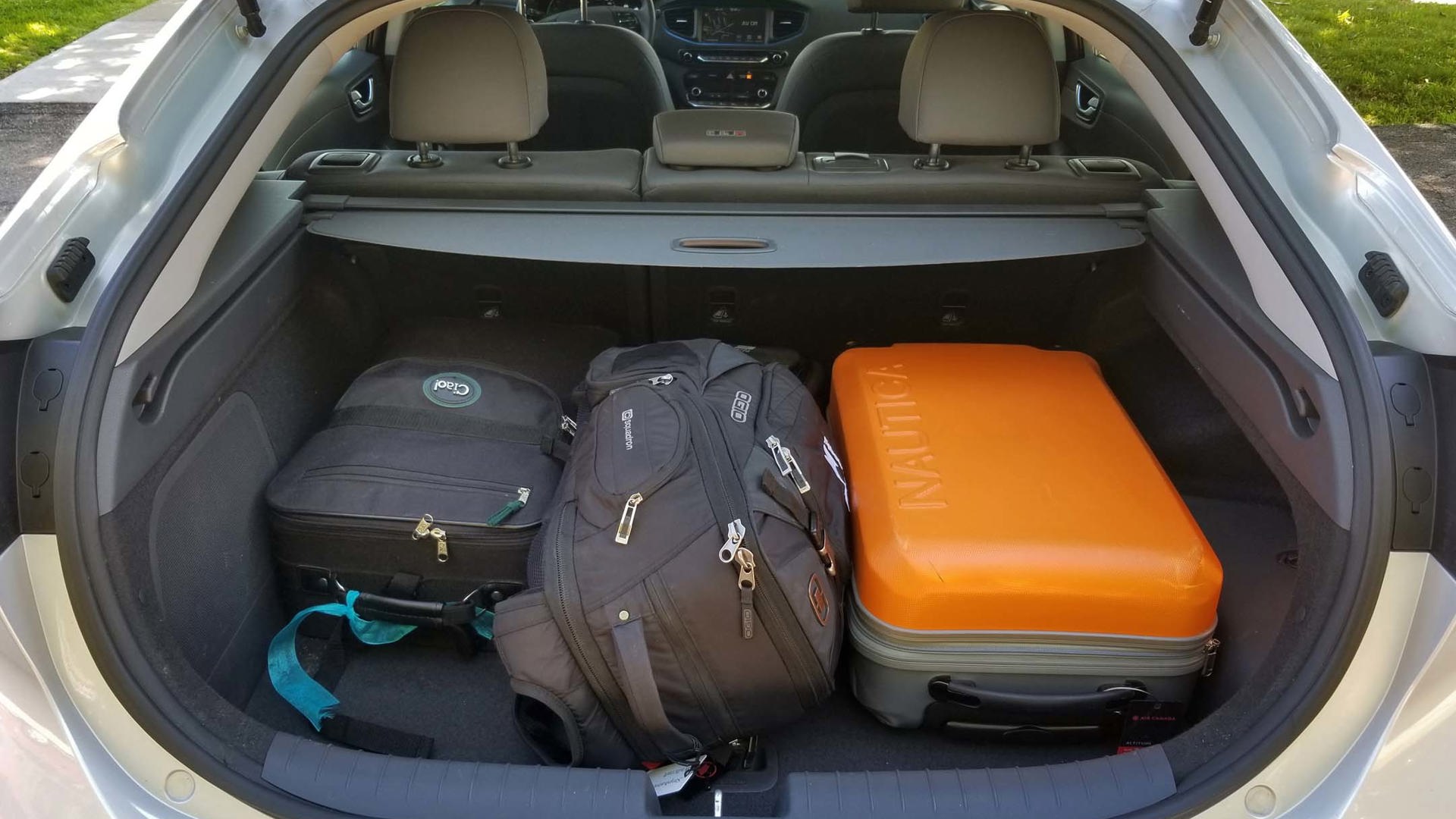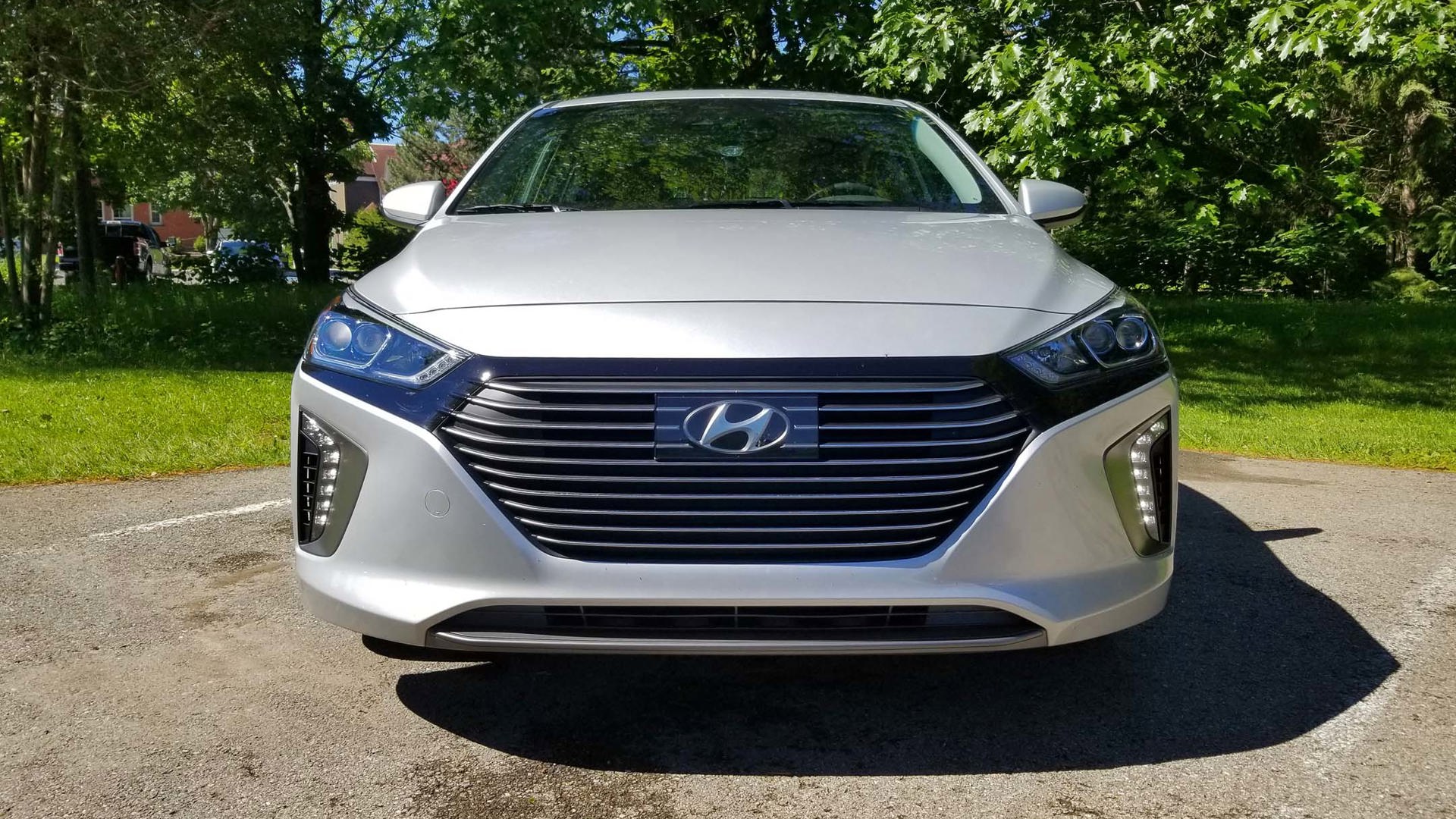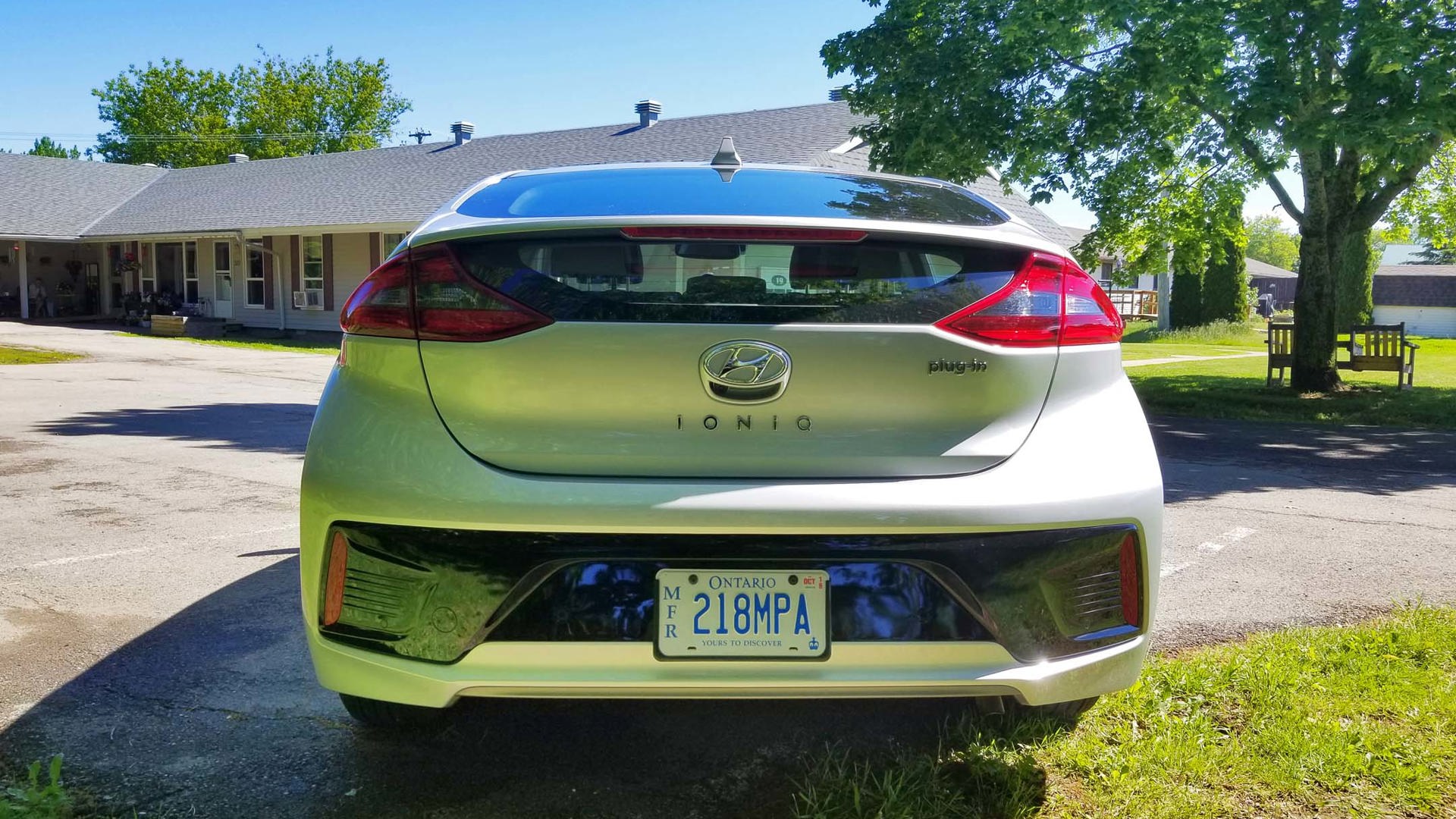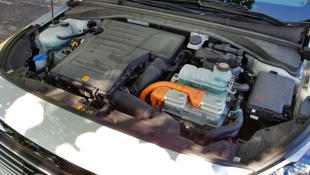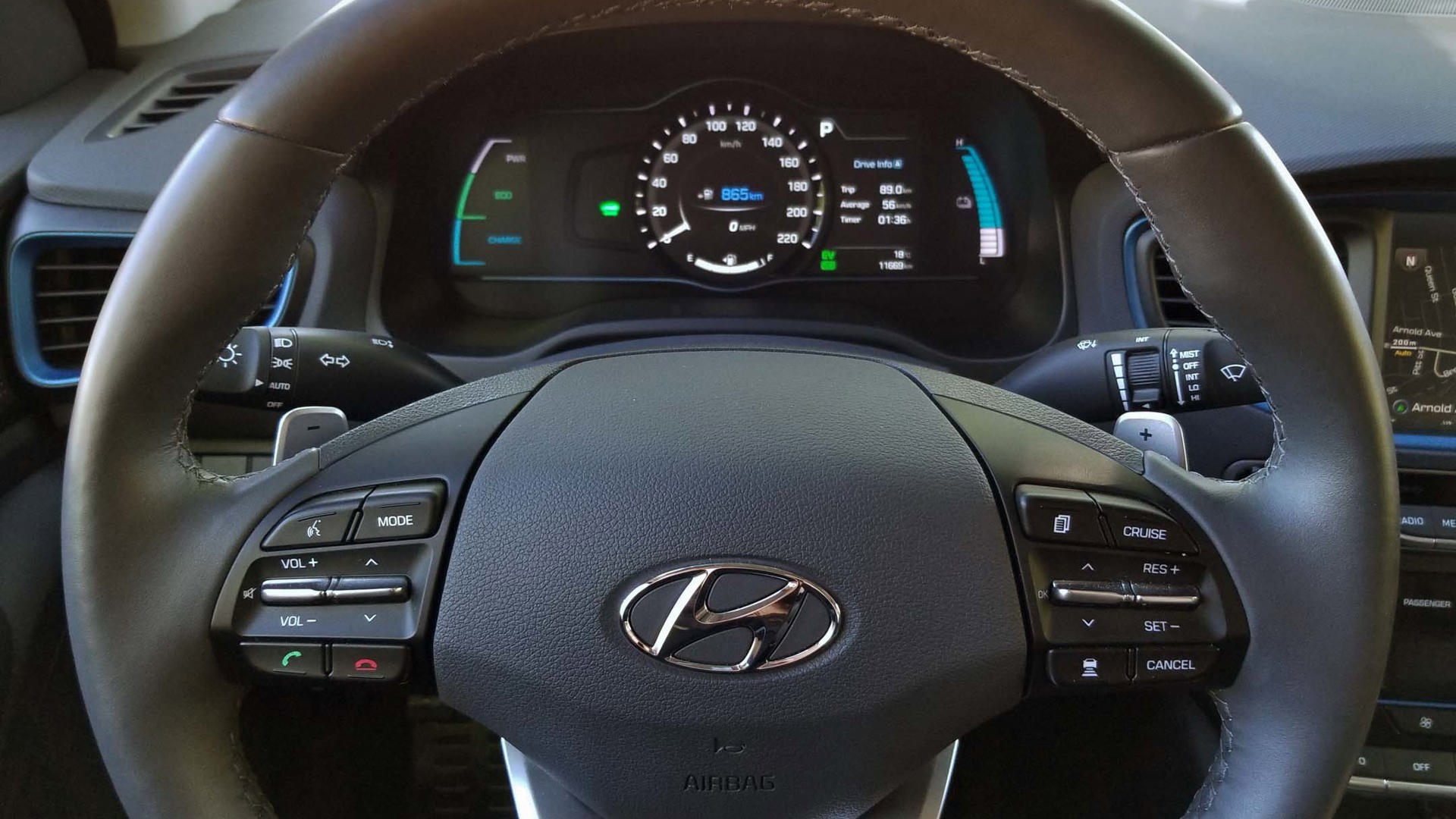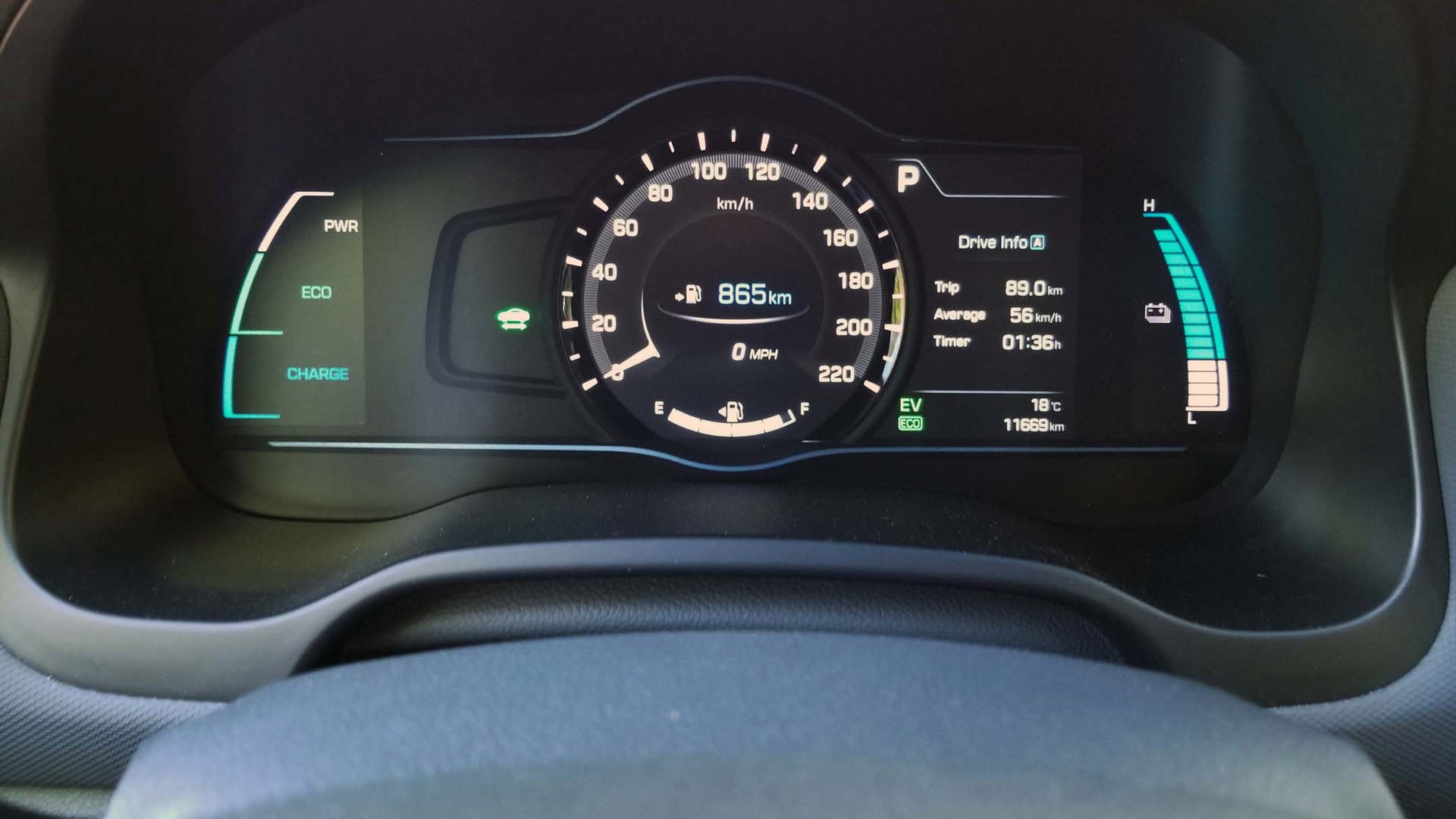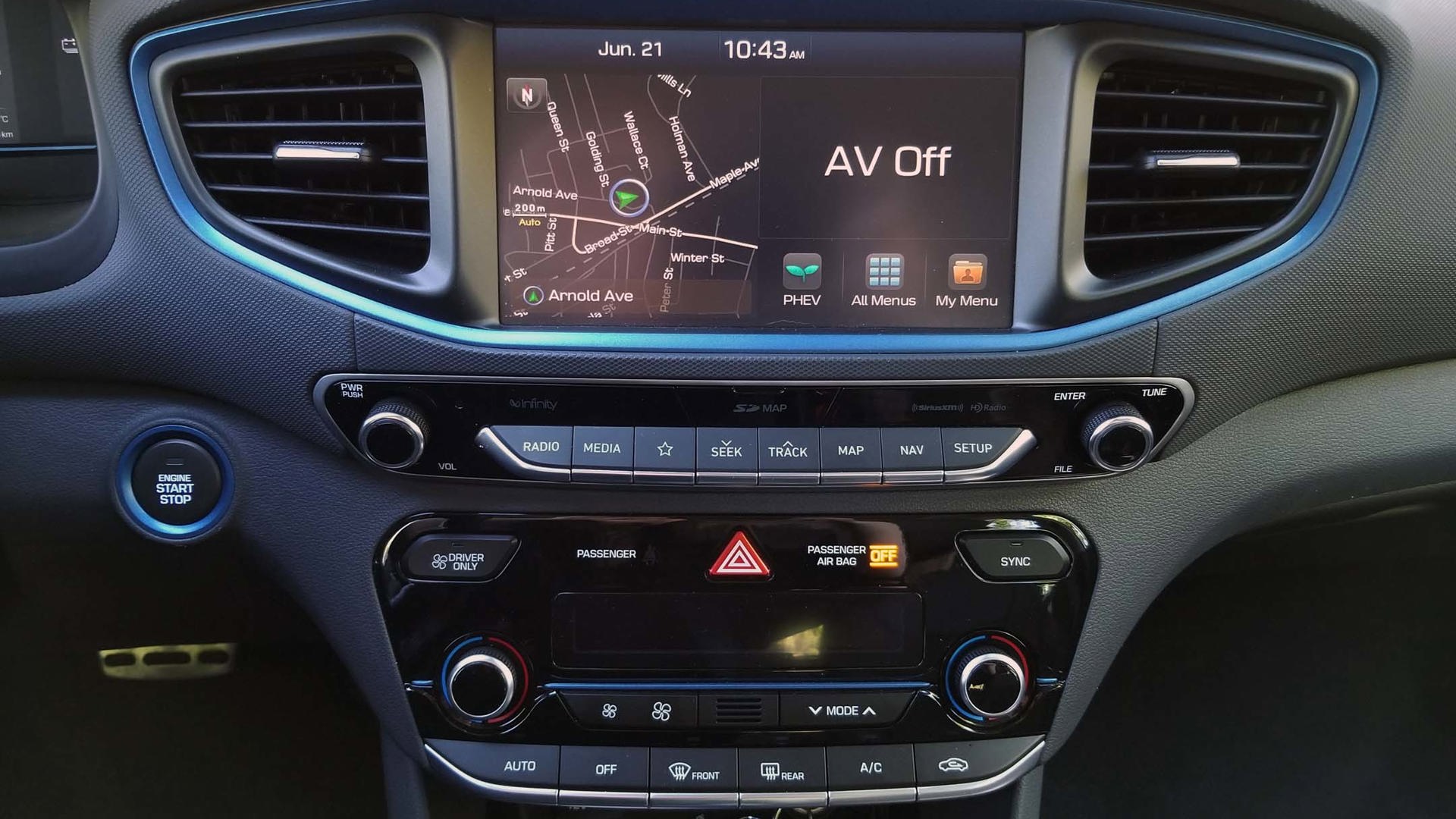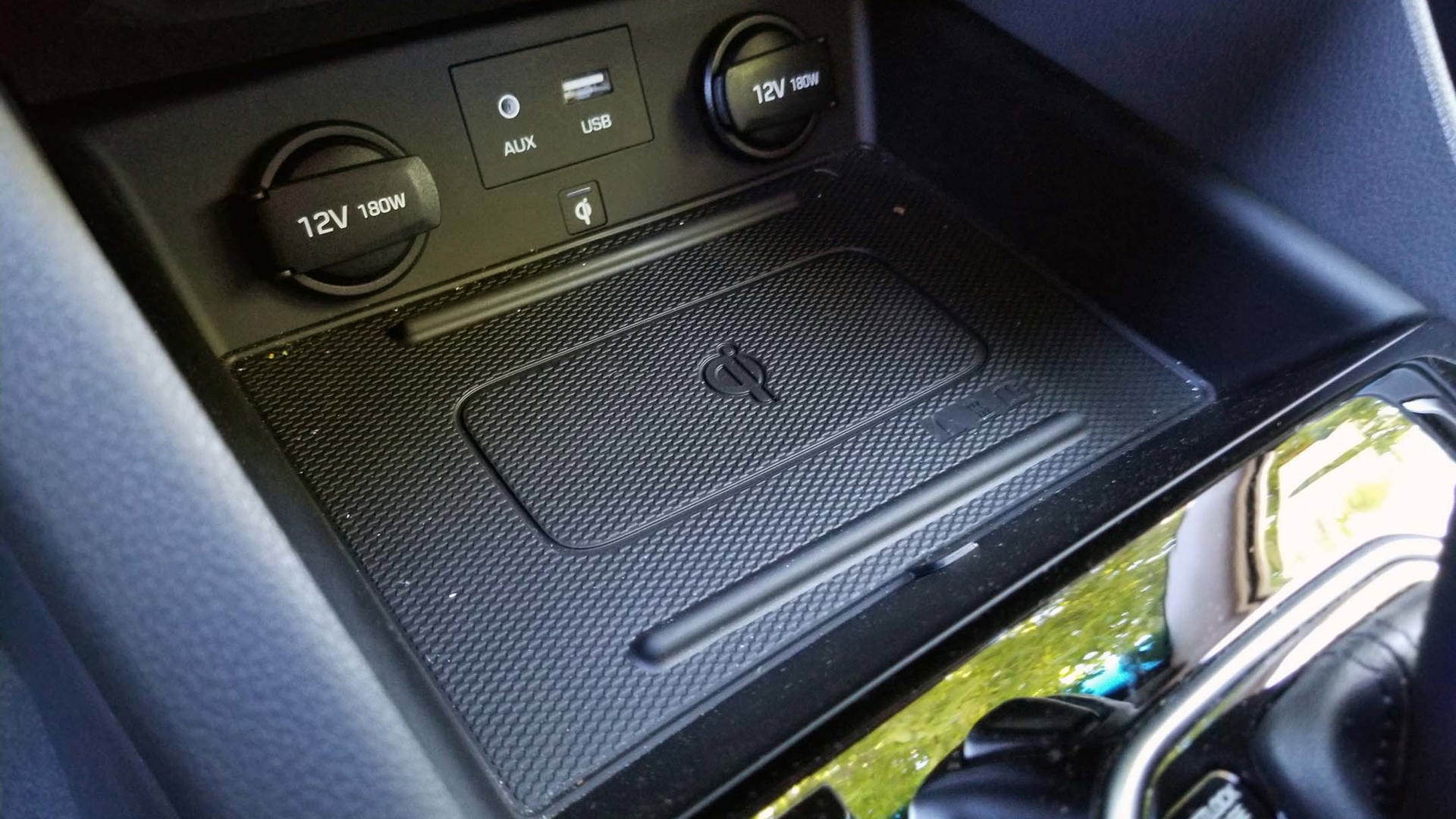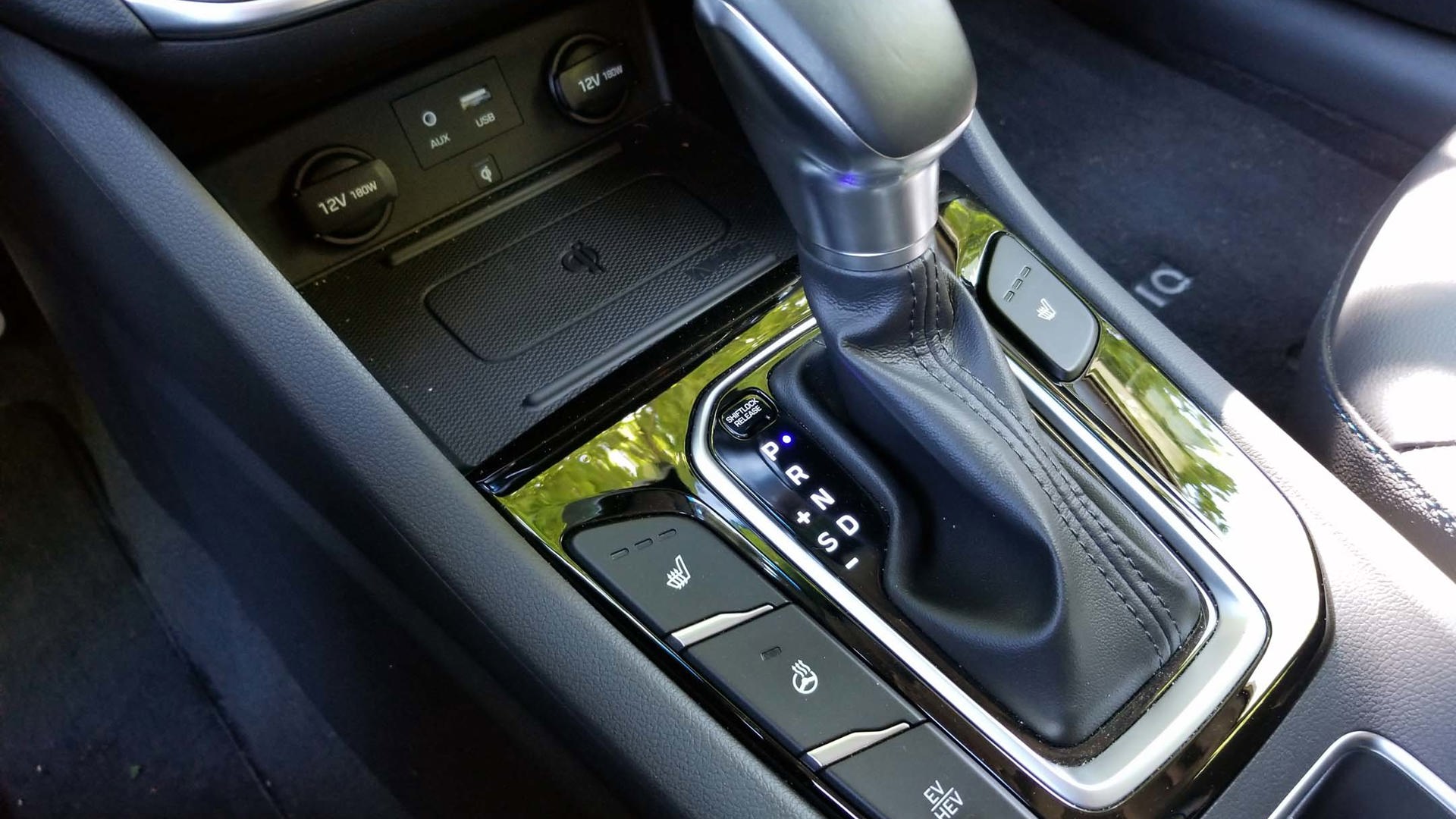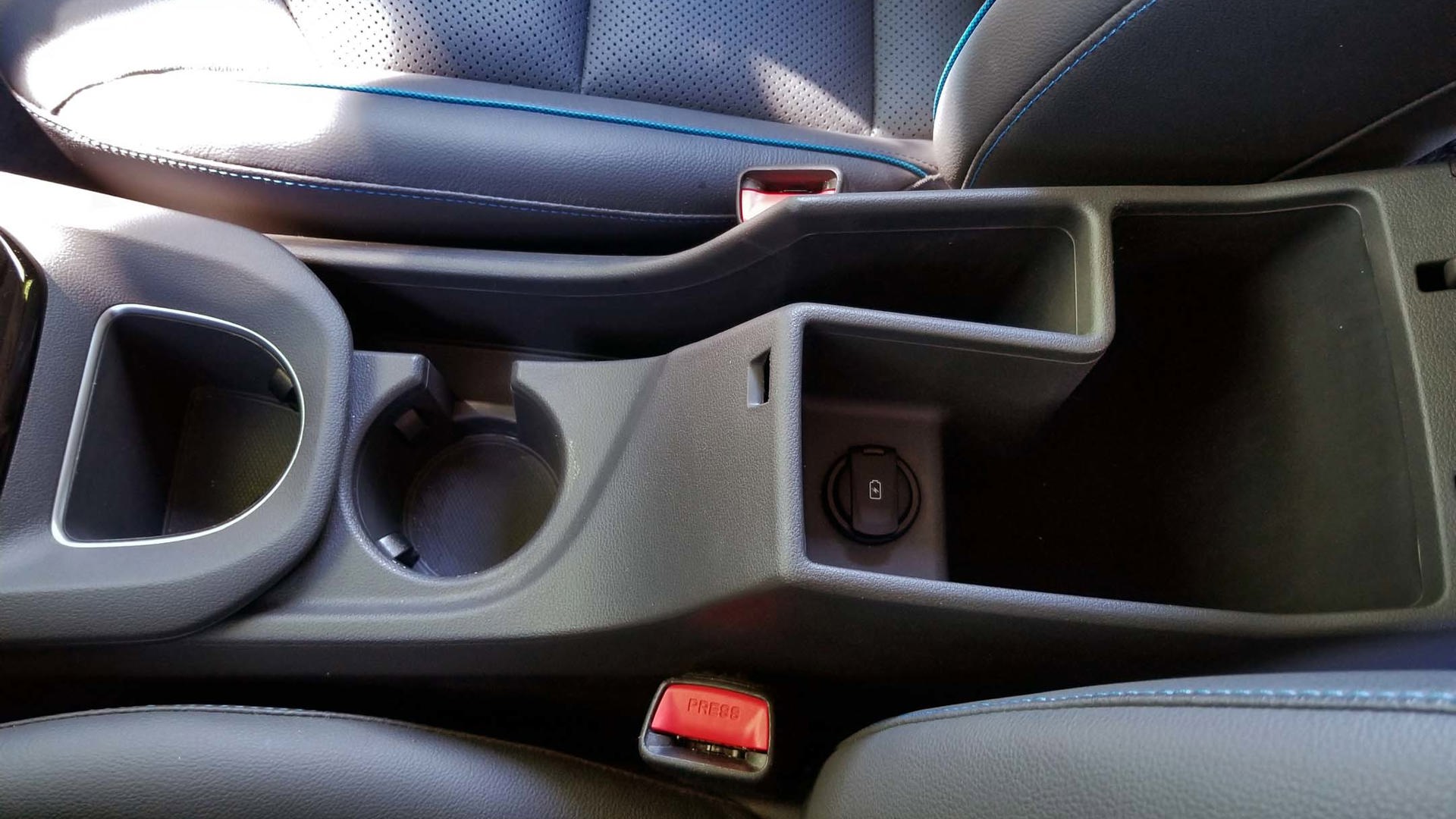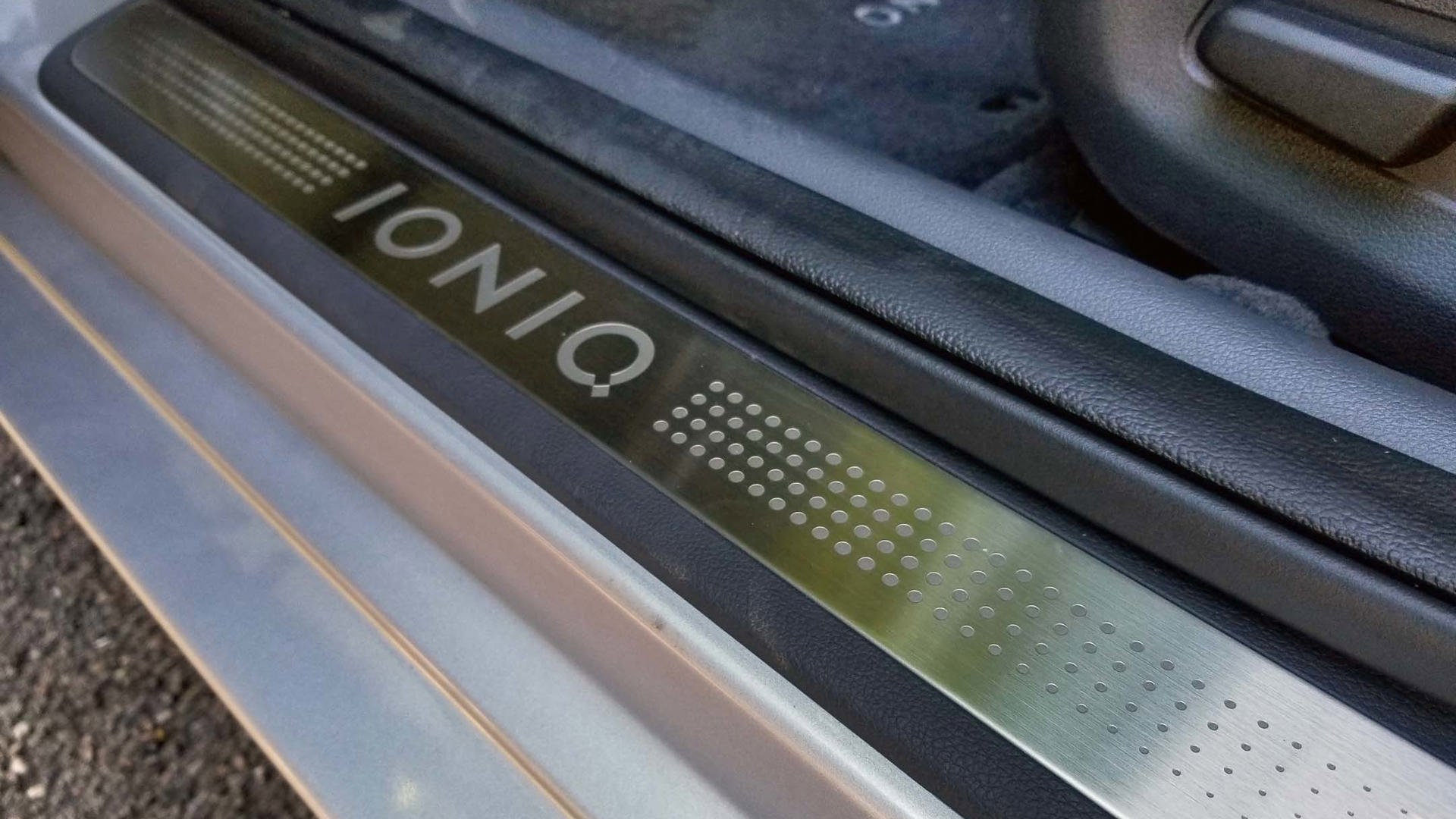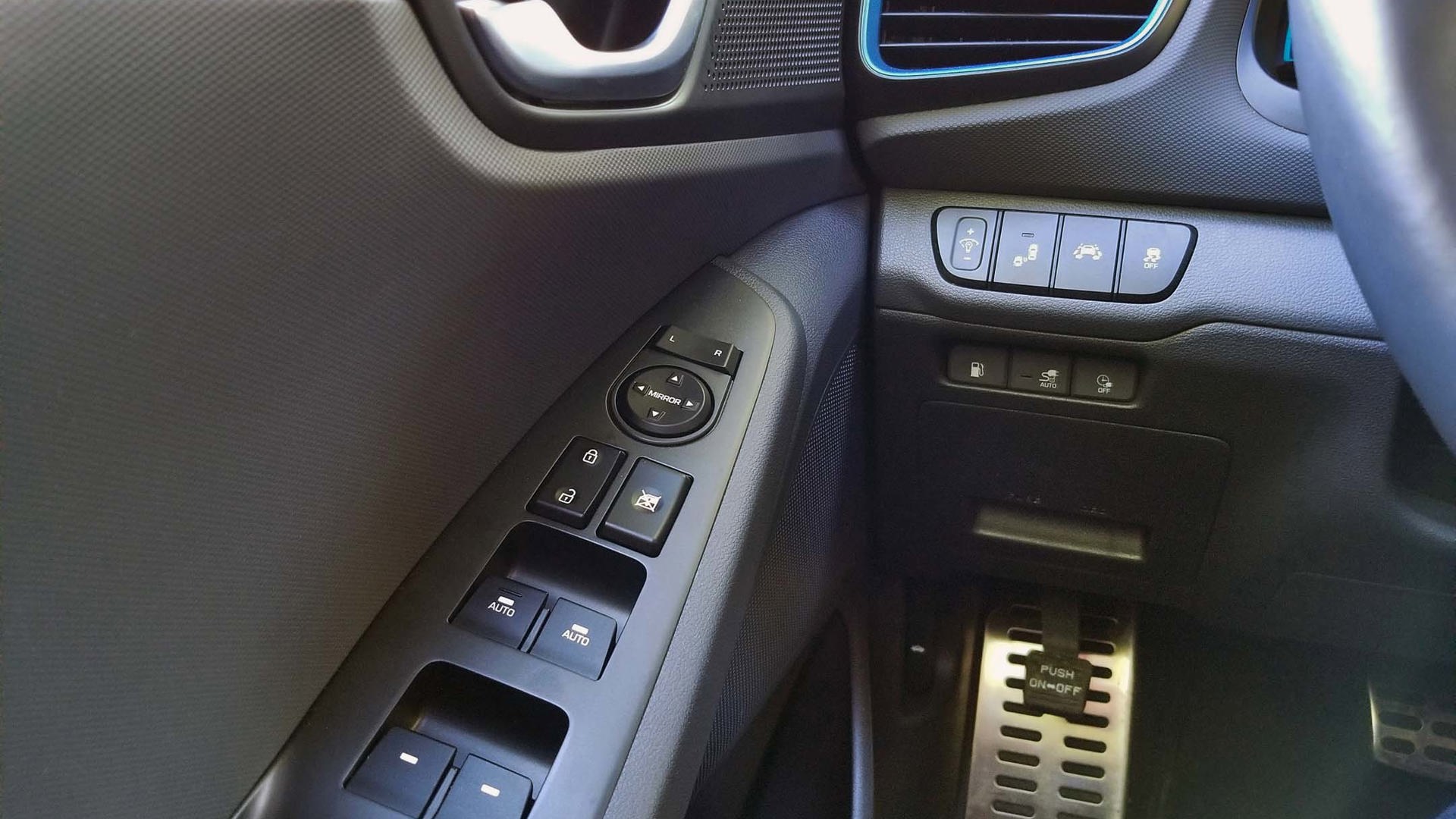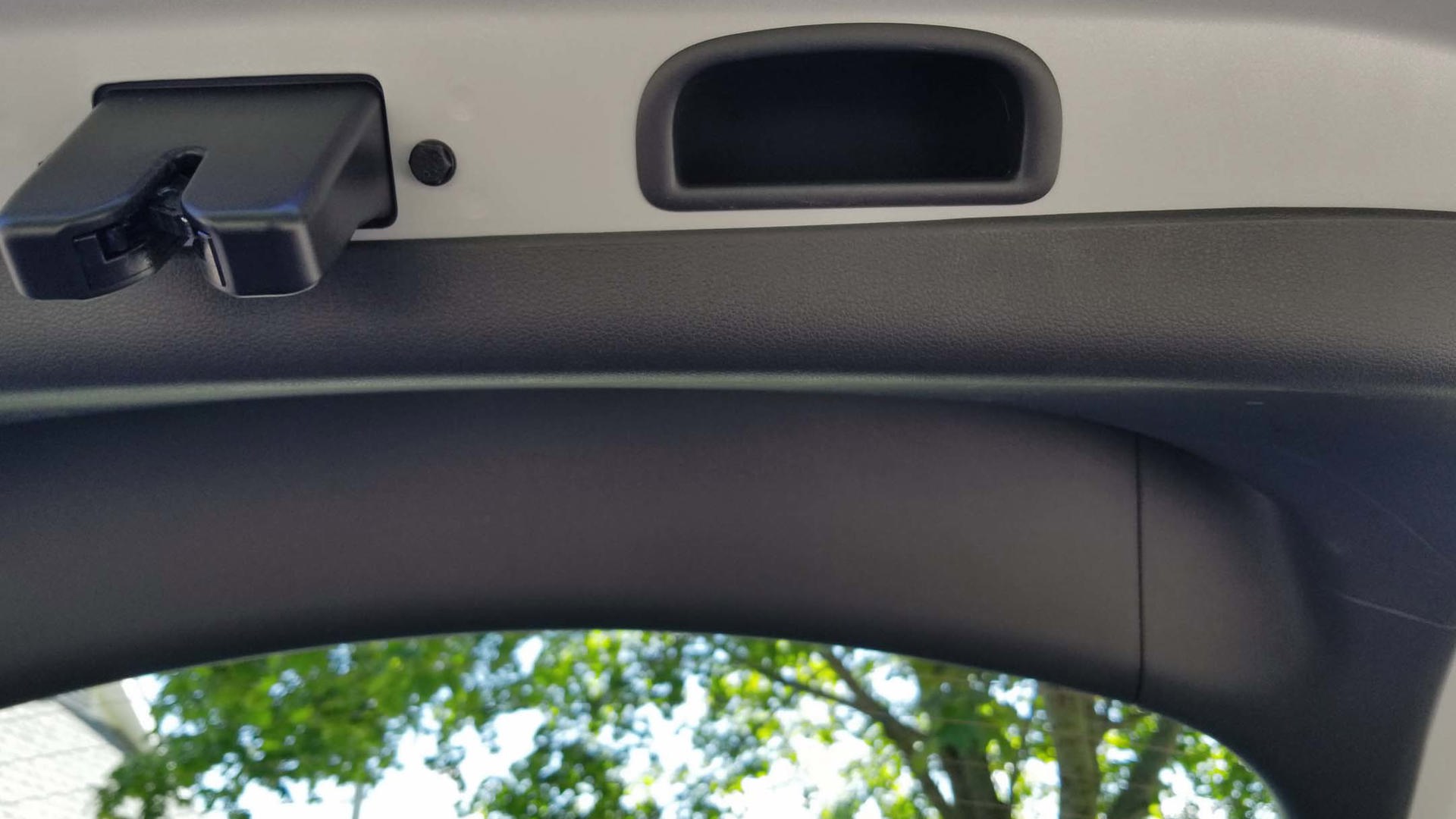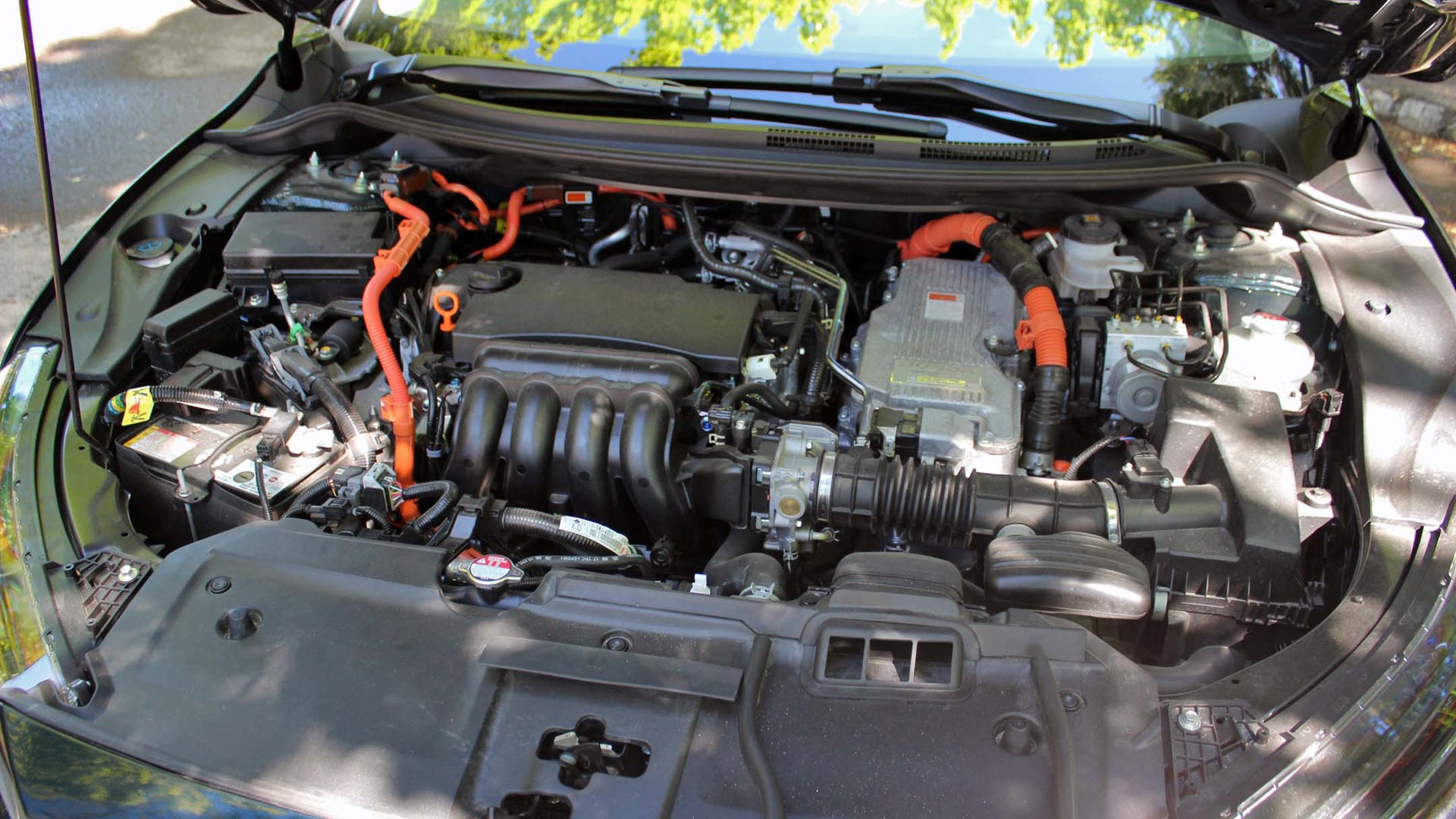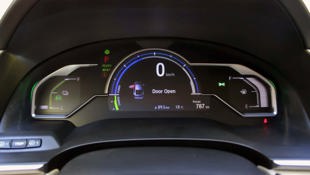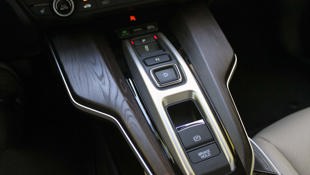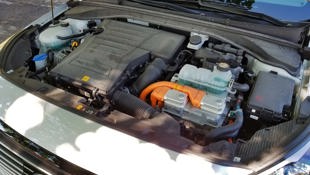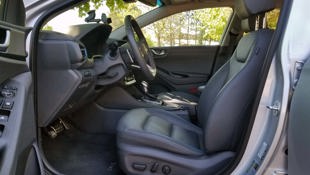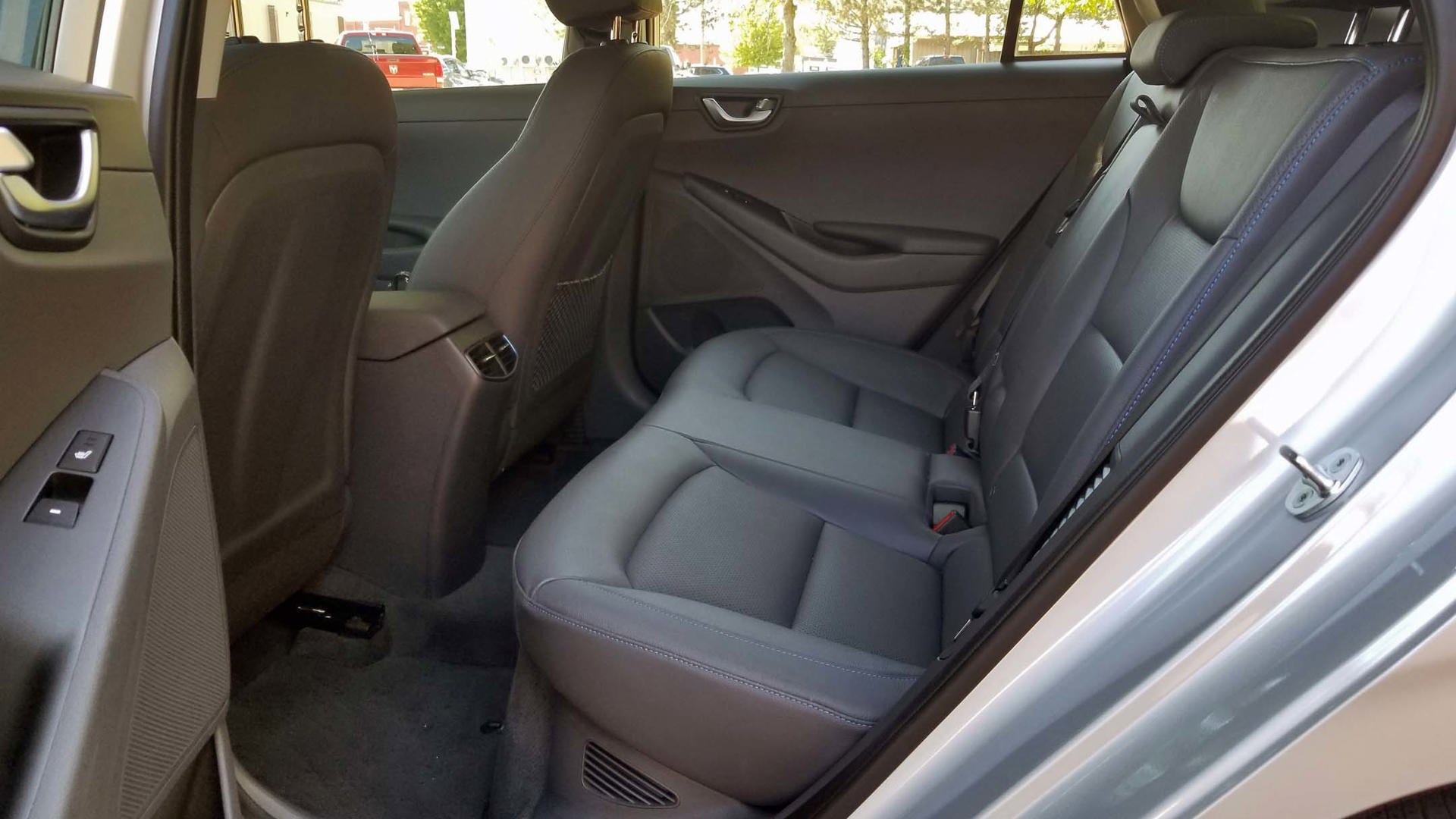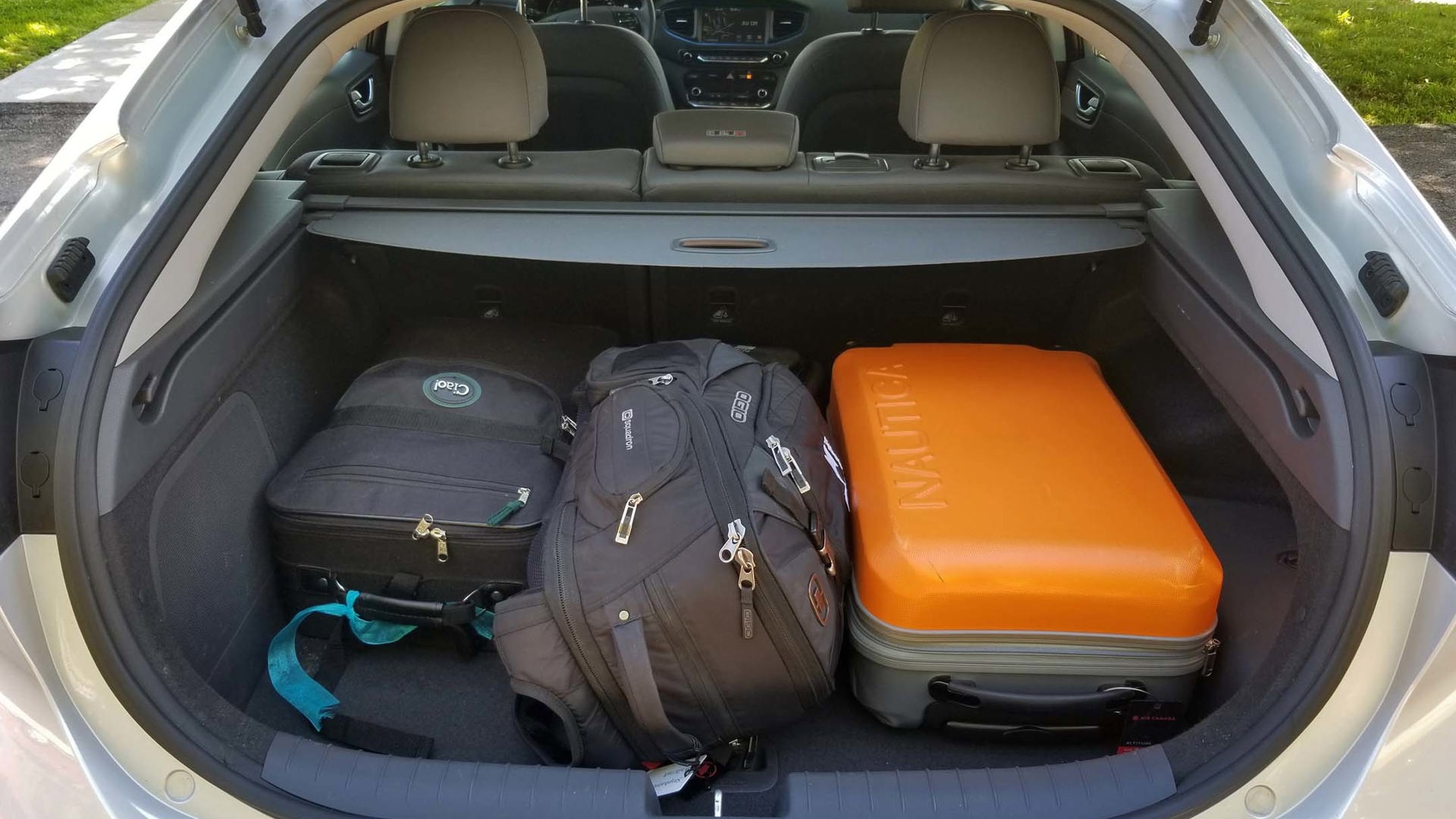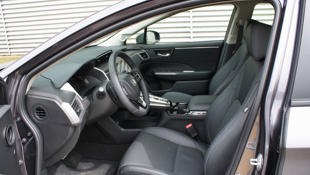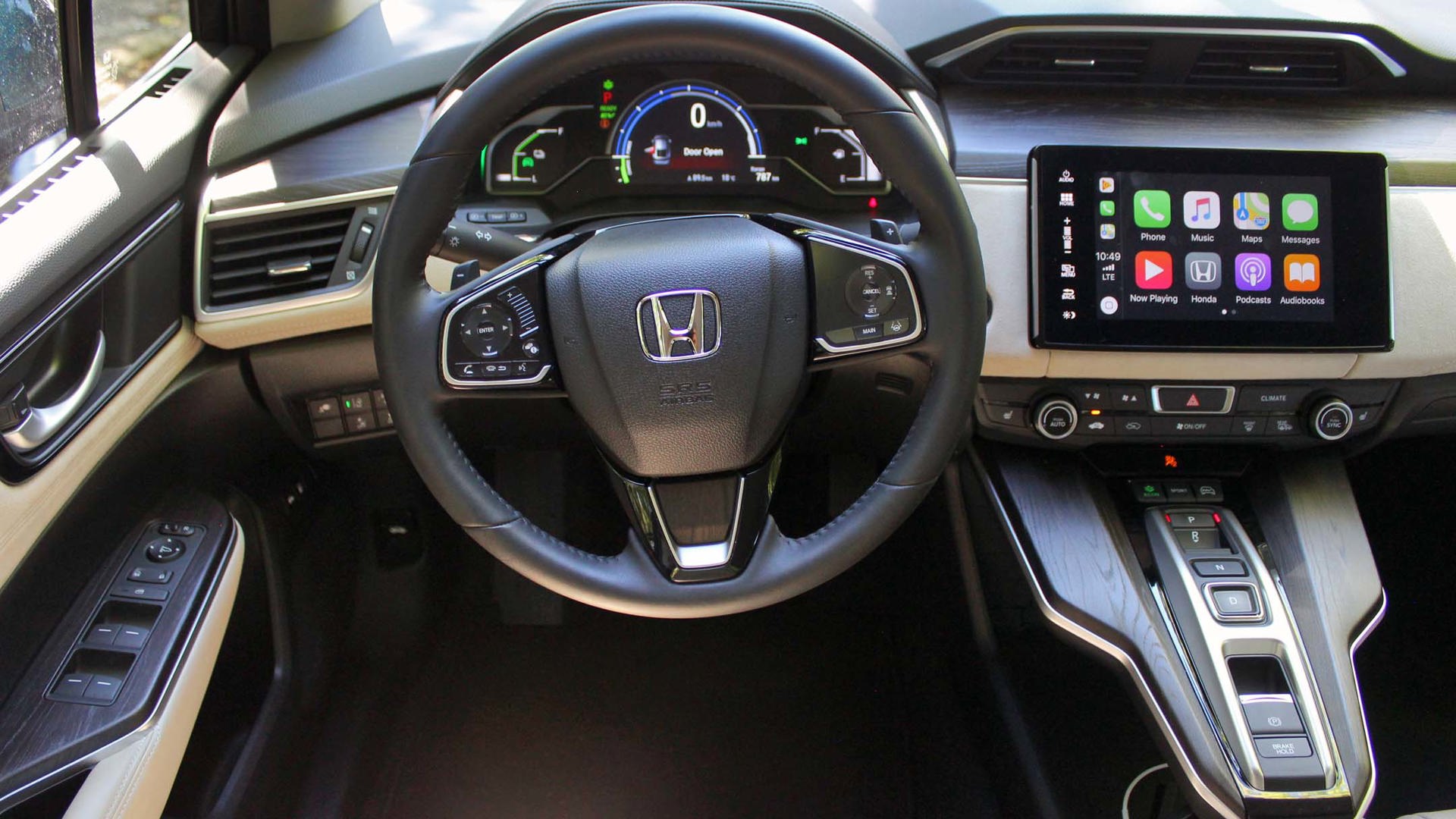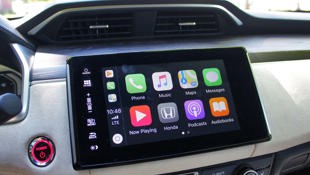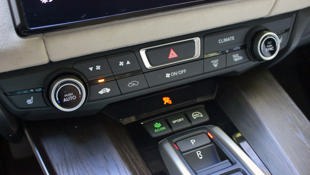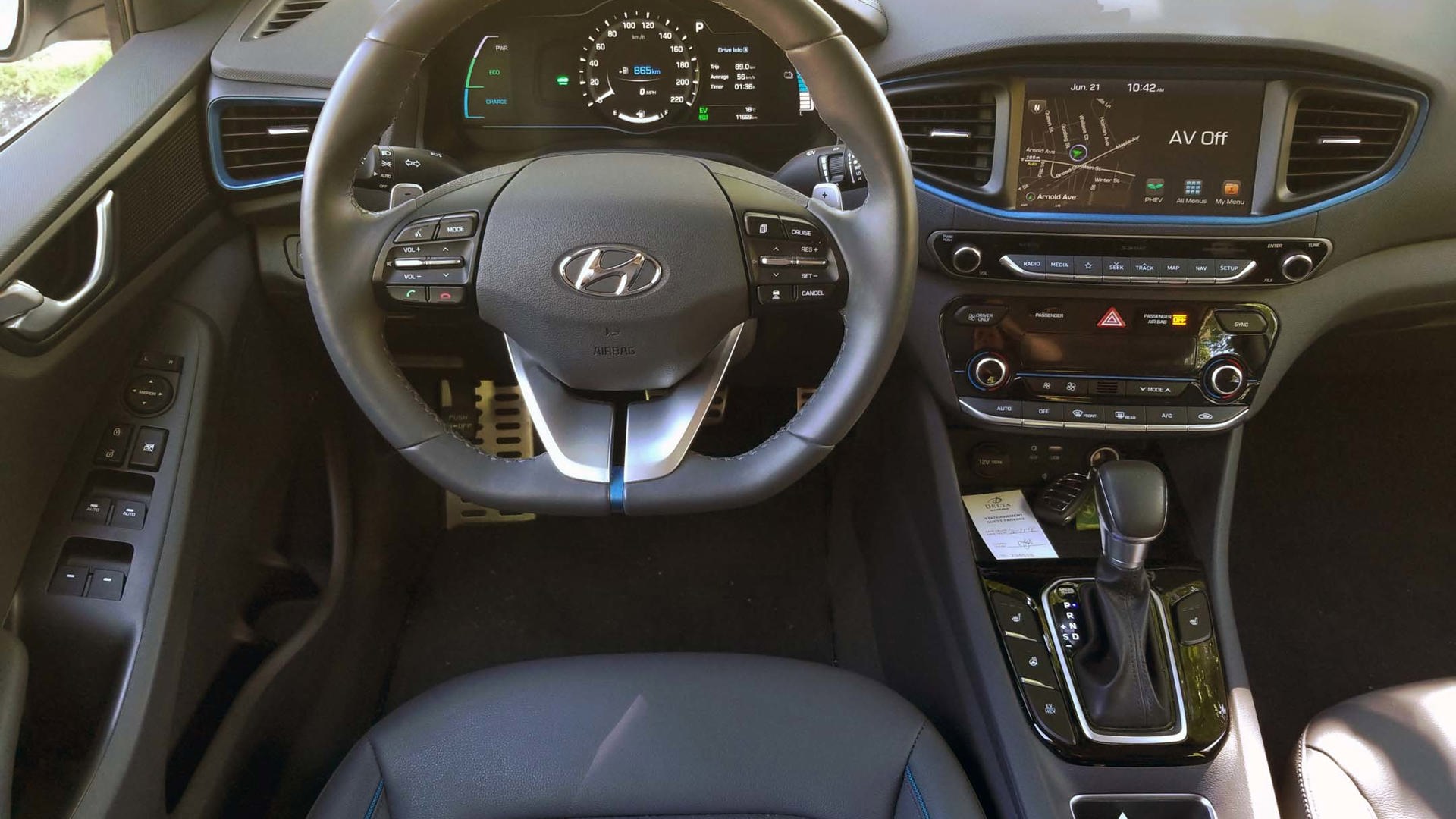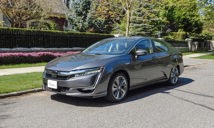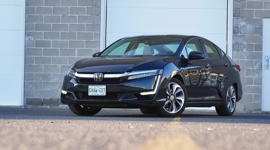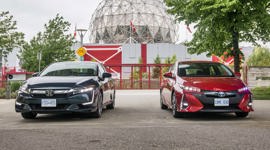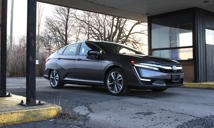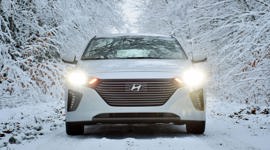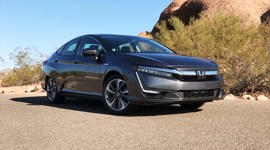Comparison Data
|
2018 Honda Clarity Plug-In Hybrid Touring
|
2018 Hyundai Ioniq Electric Plus Limited
|
|---|---|
|
Engine Displacement
1.5L
|
1.6L
|
|
Engine Cylinders
I4
|
I4
|
|
Peak Horsepower
212 hp @ 5,500 rpm comb.
|
164 hp comb.
|
|
Peak Torque
232 lb-ft @ 5,000 rpm
|
`95 lb-ft @ 4,000 rpm
|
|
Fuel Economy
5.3/5.9/5.6 L/100 km (gas only); 2.1 Le/100 km
|
4.4/4.6/4.5 L/100 km (gas only); 2.0 Le/100 km
|
|
Cargo Space
439 L
|
650 L
|
|
Base Price
$43,900
|
$36,499
|
|
A/C Tax
$100
|
$100
|
|
Destination Fee
$1,655
|
$1,705
|
|
Price as Tested
$45,655
|
$38,304
|
|
Optional Equipment
None
|
None
|
In the balance of efficiency versus usability, plug-in hybrids currently corner the market.
The best of both worlds: a port for easy overnight charging, and a fuel tank to eliminate range anxiety for longer trips.
They’re the only type of vehicle that truly offers the best of both worlds: a port for easy overnight charging, and a fuel tank to eliminate range anxiety for longer trips. Plus, they qualify for provincial EV incentive rebates in Quebec, British Columbia, and – as of this writing at least – Ontario.
On the Automobile Journalists Association of Canada’s 2018 EcoRun, held in New Brunswick this past June, two of the most appealing entries to recently hit the market were available for back-to-back test drives: the 2018 Honda Clarity Plug-In Hybrid and the 2018 Hyundai Ioniq Electric Plus.
EcoRun’s entire reason for being is to create an ideal environment for fuel-efficient driving that puts vehicles such as these to a real-world test. autoTRADER.ca’s Dan Heyman and I drove high-end versions of these two cars – the Clarity Touring and Ioniq Electric Plus Limited – one after the other on drive legs that were very similar in length, type of roads, and conditions. Here’s what we found.
Powertrains and Drive Feel
Honda Clarity: 8.5/10
Hyundai Ioniq: 7/10
In the Ioniq, you’ll find a total system output of 160 hp, with 104 of those horses and 109 lb-ft coming from a 1.6-litre Atkinson-cycle four-cylinder engine and the remaining 60 hp and another 125 lb-ft provided by a 45 kW electric motor. The transition between the two isn’t always perfectly smooth, but pedal feel is easy to control. This car also comes with a six-speed dual-clutch transmission, which is a nice bonus – it’s uncommon to find anything but a continuously variable transmission (CVT) in a car that’s intended for peak fuel economy, which is a type of transmission that not everyone loves.
The Clarity, on the other hand, does have a CVT, but the trade-off is a higher total system output. While its smaller 1.5-litre Atkinson-cycle four-cylinder engine produces less power at 103 hp and 99 lb-ft of torque, the electric motor is much beefier at 135 kW (181 hp) and delivers 232 lb-ft of torque that, as with any electrified powertrain, is available right from a stop. In terms of what you’ll find under your right foot, this gives the Clarity an edge – which runs more smoothly and quietly, to boot.
The Ioniq’s electric motor is powered by an 8.9 kWh lithium-ion battery that offers up to 47 km of electric-only driving. The Clarity’s range is more than 1.5 times that, at 77 km from a 17 kWh lithium-ion battery.
In terms of battery top-ups, neither of these cars can take a Level 3 quick charge. That’s not all that unusual for plug-in hybrids where there’s a gas tank available for back-up; some do offer the feature – such as the Mitsubishi Outlander PHEV and BMW i3 REx – these just aren’t among them. The trade-off there is that you can get that range back faster in the Ioniq, which will take a full charge in two hours and 18 minutes with a Level 2 charger and under nine hours with a standard household plug; the Clarity takes two hours and 30 minutes at a Level 2 but 12 hours at 120V.
NRCan’s official fuel economy rating for the Ioniq is 2.0 Le/100 km and the Honda Clarity’s is only marginally different at 2.1. On EcoRun, we drove some legs with the plug-ins fully charged and others with the batteries completely drained (because we overly competitive journalists couldn’t leave a single electron to the benefit of others, of course, and not every rest stop had sufficient charging infrastructure for every vehicle).
In my time with the Ioniq, I had a full charge and finished with a dismal 3.6 Le/100 km – I had a passenger with me and got distracted, so I forgot to drain the battery (excuses, excuses) – while Heyman followed that up with about half the battery left at his disposal to achieve 2.4 Le/100 km. In the Clarity, Heyman drained the battery and pulled off an average of 1.55 Le/100 km to start the day, while I followed that up with a gas-only figure of 4.4 L/100 km. In total, the Clarity finished EcoRun with a final usage of 3.12 Le/100 km, and the Ioniq ended with 3.35 Le/100 km.
One thing I did enjoy more about the Ioniq is that it gives much clearer feedback about how your driving style is affecting your fuel usage. When you hit the brakes and the accelerator, there’s a gauge that clearly shows how much power you’re using or recovering based on how hard you’re hitting the pedals. In the Clarity, it isn’t quite as easy to glean the same information.
Heyman disagrees with me on this point.
“This is a car that shows that Honda has really done its research when it comes to PHEVs,” he says. “It’s easy to track power flow/charging, has a generous range that actually saw me use power at a slower rate than that which I was travelling, and when it came time to re-charge on the go, I saw about two extra kilometres of range per kilometre driven. That instils a lot of confidence.”
He also points out that the Ioniq doesn’t have a way to force full-EV driving.
“I think Hyundai should think about providing some form of EV lock-out, even on the PHEV model,” he says. “The Clarity doesn’t really have one either, but at least it’s got the two HV levels (not to mention Sport and Eco modes) that work almost the same way as a full-EV lock-out.”
Styling
Honda Clarity: 7.5/10
Hyundai Ioniq: 7/10
The Ioniq Limited’s interior is nice with leather seats and blue accents that tie it into Hyundai’s eco-brand colouring without hitting you over the head with it. On the outside, it looks much like any other car. Some people may prefer that their eco-friendly cars stand out, but I find blending in with the crowd to be a bonus.
Less subjective than styling inside and out was the Ioniq’s lower levels of refinement.
“I wish it didn’t feel so tinny,” Heyman says. “Especially those doors. Yikes.”
For the Clarity’s part, its interior is nicer visually. I don’t love the lifted centre console as it makes me feel more enclosed in the driver’s seat. There are wood and suede finishes – neither are real, but both are convincing – and it has a more premium feel overall. The front end of the Clarity is edgier, but it’s in a way that works. My main styling quibble with it is the skirts over the rear wheels. They’re better for fuel efficiency, certainly, but they’re also hard to get used to in a modern car.
“Styling is going to be a sticking point with the Clarity – there’s simply no getting around that,” Heyman concurs. “The rear wheel covers are functional, though. They had better be.”
Cargo and Storage
Honda Clarity: 7/10
Hyundai Ioniq: 8/10
That big compartment under the Clarity’s lifted centre console means that it has a large extra storage nook in the cabin, which could be a benefit for some owners. The cupholders are also nicely sunken to put larger drinks out of the way. More significant, though, is that the Ioniq’s 750-litre cargo area operates more like a hatch than a trunk, meaning that there’s a more diverse space to work with if the tonneau cover is removed and the rear seats are dropped. The access to the Clarity’s 439 litres is more trunk-style and therefore more restricted in its usefulness.
Heyman was impressed with the Clarity’s cargo hold nonetheless.
“Impressive, considering the fact they’ve had to deal with a battery bank,” he says. “It makes the Fusion Energi’s trunk look like it belongs in a compact.”
Infotainment and Connectivity
Honda Clarity: 7.5/10
Hyundai Ioniq: 8/10
Both of these cars come with Android Auto and Apple CarPlay functionality by default, which takes a major element out of the infotainment discussion.
In the Clarity, Heyman reports that CarPlay works without a hitch.
“That’s not always the case,” he says, “especially, I’ve found, when using non-Apple apps.”
Unfortunately, it’s equipped with the Honda infotainment system that doesn’t come with a volume knob. The slider on the left side of the steering wheel eases that inconvenience somewhat, though not for the front passenger. (If you’re a control freak about music, maybe this is a good thing.) Otherwise, this is a good and relatively user-friendly system, apart from all the aimless screen stabbing.
The Ioniq benefits from one of the better infotainment systems around. On top of the smartphone app compatibility, it has plenty of radio presets, including some that will record SiriusXM stations so that you don’t miss the beginning of your favourite song. Most of the major functions are on hard buttons right below the screen for easy switching.
Safety and Other Features
Honda Clarity: 8/10
Hyundai Ioniq: 8/10
The Ioniq gets points for having heated front seats, rear seats, and steering wheel right from the entry-level model, as well as blind-spot detection with lane-change assist and rear cross-traffic alert. Move up to the Limited trim, as our tester was, and you add lane-keep assist, adaptive cruise control, and autonomous emergency braking with pedestrian detection.
The Clarity, on the other hand, only has heated front seats available, period. But it does come with autonomous emergency braking, forward collision warning, lane-keep assist and lane-departure warning, road-departure mitigation, adaptive cruise control, and automatic 911 emergency calling included at every trim level.
Verdict
Honda Clarity: 38.5/50
Hyundai Ioniq: 38/50
While the Honda Clarity Plug-In Hybrid Touring comes off as more of a premium car and comes out on top in the points (just barely), the Hyundai Ioniq Electric Plus Limited is packed with some highly appealing features. With the Clarity Touring being priced at a total of $45,683 before incentives (MSRP plus fees) and the Ioniq Limited at $38,478, I lean more toward choosing the Ioniq – provided I didn’t need the extra electric range to make it through my commute – because I think it’s packaged very well for the price and is more user-friendly in all the right places.

